Passive solar sanctuaries to IoT-powered plant palaces—today’s greenhouses stretch far beyond the classic glass box. Whether you garden on a city balcony or steward several rural acres, the twenty ideas below show how to capture free energy, reclaim wasted spaces, and weave sustainability into every square foot. Each design balances cost, climate, and creativity so you can pick the concept that fits your goals, then adapt the details to local conditions and evolving technology. Ready to see how the right greenhouse can lengthen harvests, trim utility bills, and even build community? Dive into the possibilities and let fresh inspiration take root.
1. Passive-Solar Greenhouse Heat That Lasts
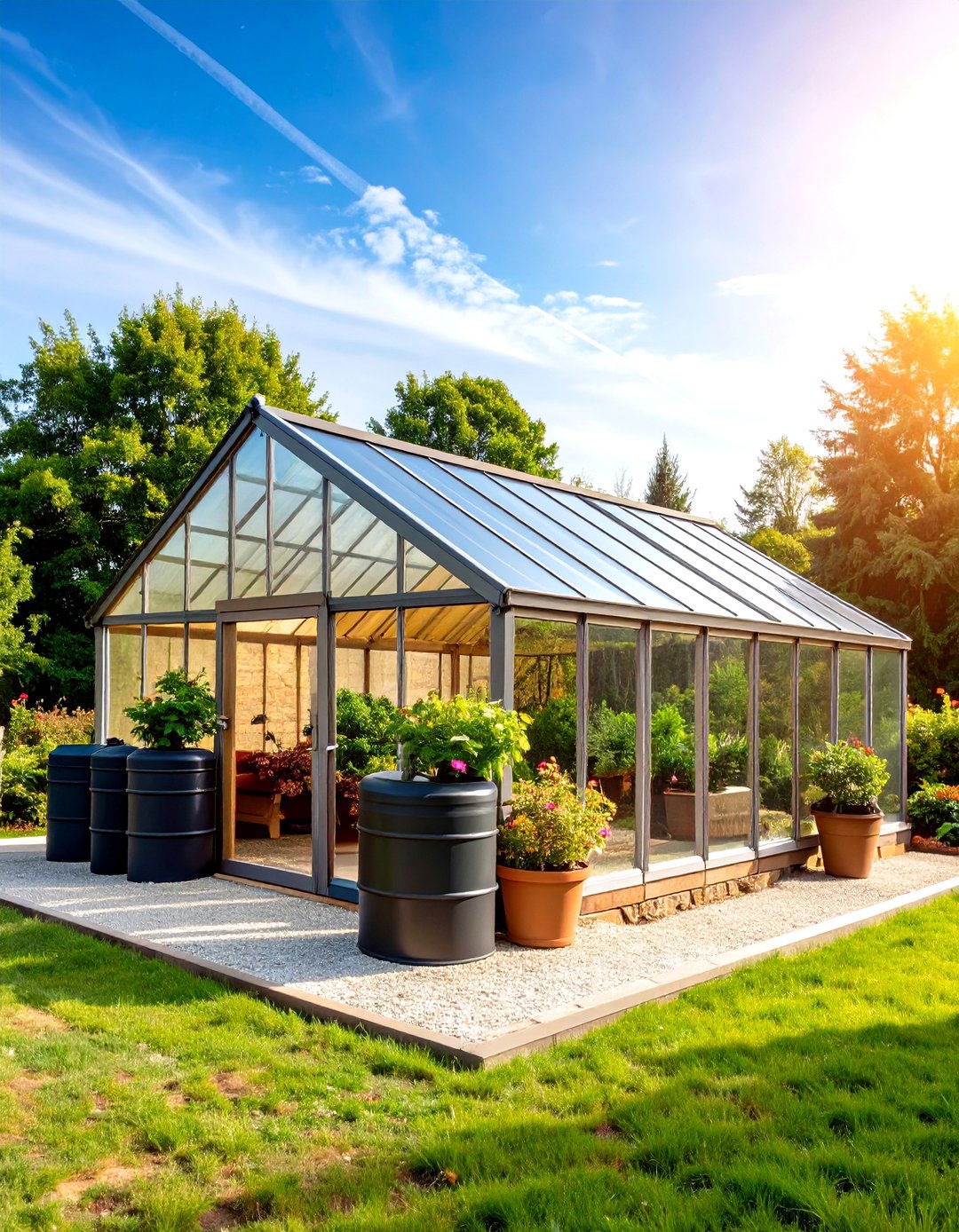
A sun-warmed greenhouse turns every bright day into battery-free fuel by storing heat in thermal mass—think painted 55-gallon water barrels or dense masonry walls. Position the long side due south, insulate the north wall, and angle glazing at winter’s low sun to maximize gain. Together, these tweaks can keep night temperatures 10-15 °C higher than outdoors, cutting auxiliary heating costs dramatically. On cloudy stretches, add row covers over tender crops to trap residual warmth. By designing for “mass before glass,” you’ll enjoy citrus, salad greens, or seedlings year-round with near-zero fossil input. Atmos Greenhouse Systems Verge Permaculture
2. Lean-To Greenhouse for Tight Side Yards
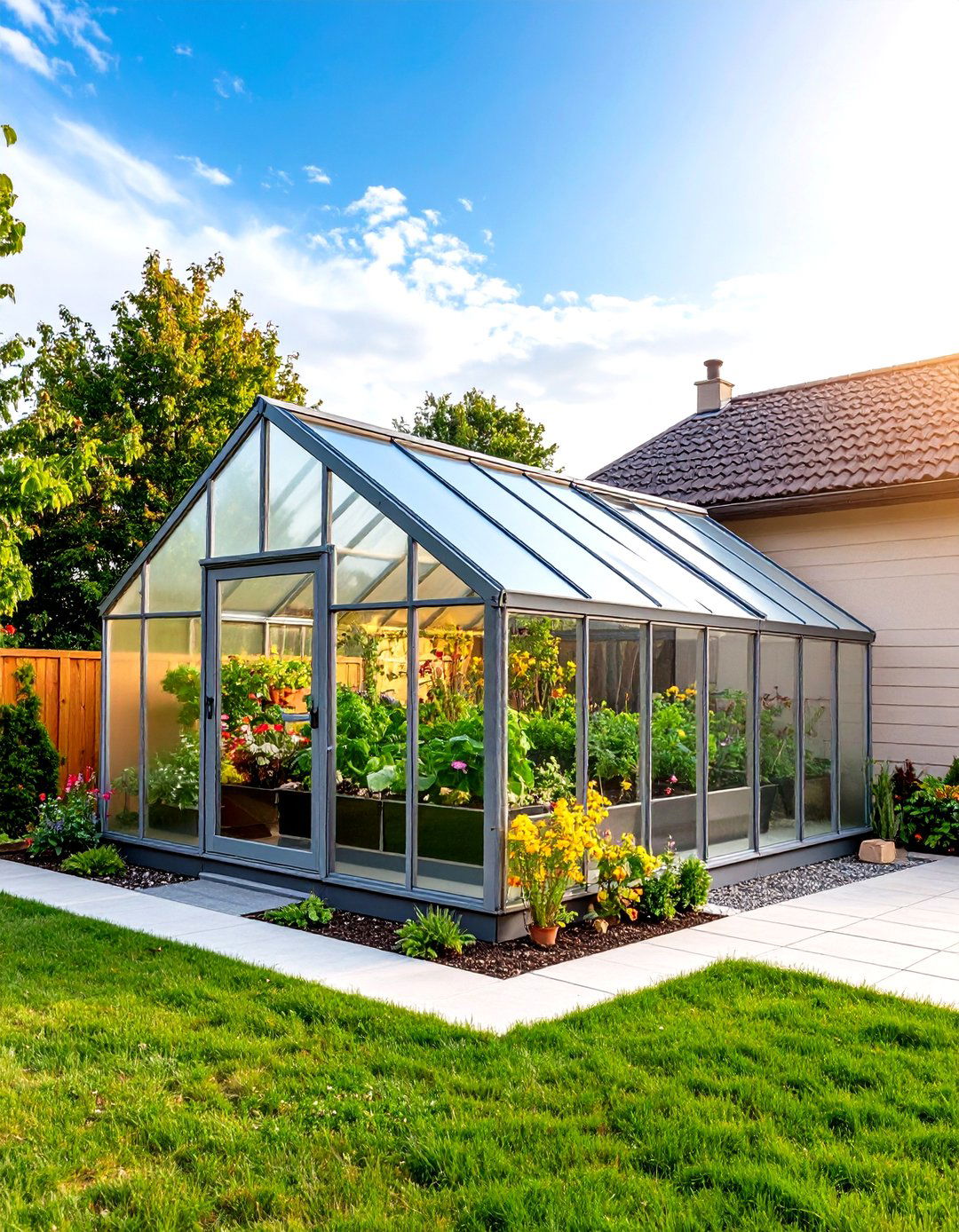
The wall your house already heats can double as the thermal spine for a lean-to greenhouse. Attach light aluminum or polycarbonate framing to the sunniest façade; the shared wall absorbs daytime warmth and radiates it back after dusk, smoothing temperature swings. Because only three new walls are needed, materials drop by up to a third compared with a freestanding model, and suburban bylaws often treat the structure as a “patio cover,” easing permits. Choose translucent roof panels pitched steeply enough for rain runoff, then route a door to the kitchen so herbs reach the stove in seconds. Planet Greenhouse
3. Mini Hoop House Over Raised Beds
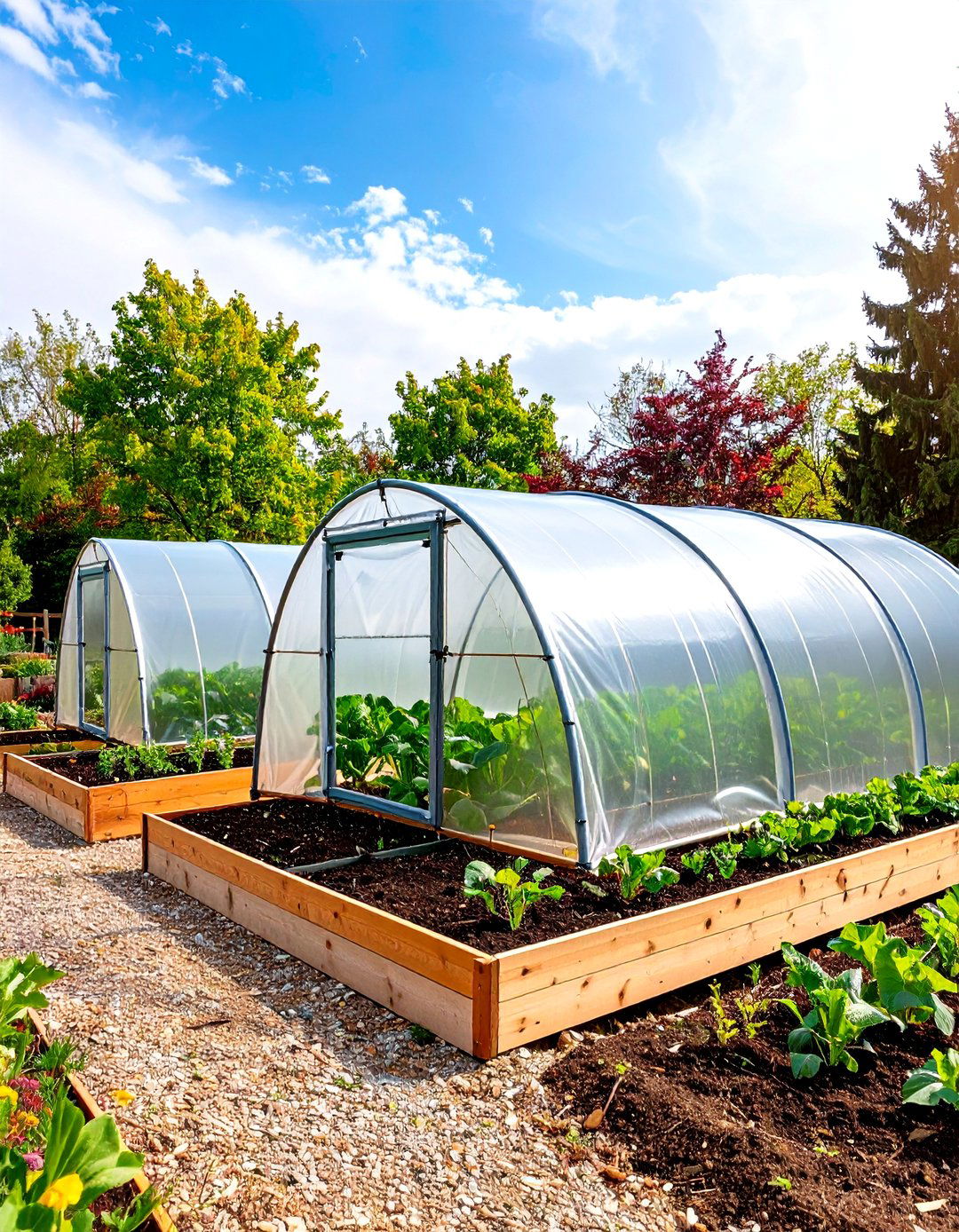
By draping flexible PVC or metal conduit hoops with UV-stabilized polyethylene film, you craft a pop-up greenhouse that costs pennies per square foot. Set hoops every three feet, secure ends with rebar, and clamp the film so it rolls up for venting. Tests show these tunnels lift soil temperatures 5-8 °C, letting spinach, carrots, and kale overwinter even in zone 5. When late blizzards threaten blossoms, double up with agribon row cover under the plastic. Because hoops weigh little, you can collapse and store them in minutes, freeing bed space for summer crops. YouTube
4. Geodesic Dome Greenhouse for Uniform Light
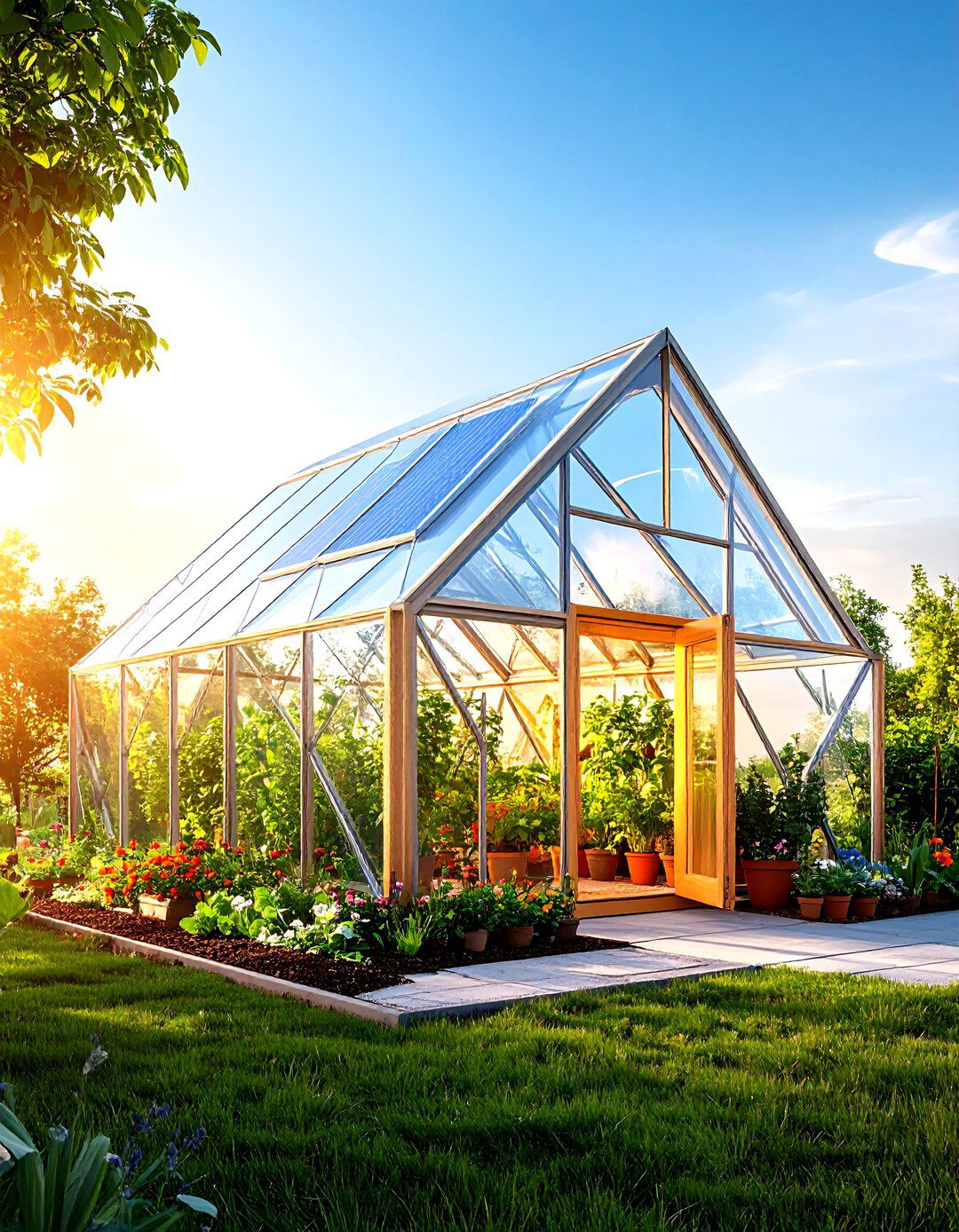
Unlike rectangular houses that scorch midday and shade mornings, a dome’s curved shell delivers consistent illumination from dawn to dusk. The self-supporting triangles shed wind and snow, so thinner glazing saves cost without sacrificing strength. Add an earth-bermed north apron and an overhead solar vent to balance summer heat. Growers report 30 % higher winter tomato yields thanks to stable light and superior air circulation. Kits snap together quickly, or fabricate hubs from recycled conduit for DIY savings. Growing Spaces Greenhouses
5. Aquaponic Greenhouse That Feeds Fish and Greens
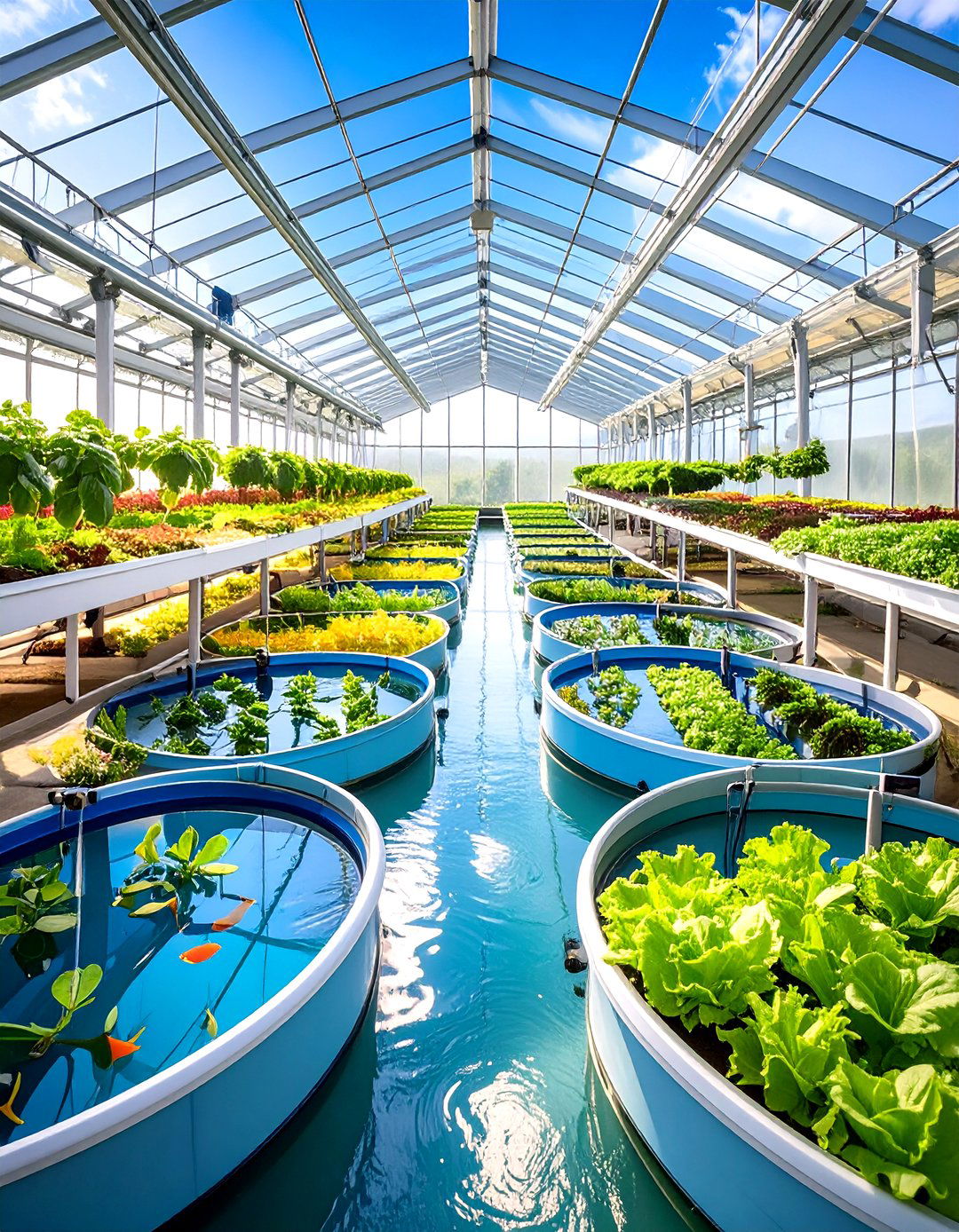
Pairing fish tanks with hydroponic grow beds forms a closed loop: fish waste fuels lettuce, and the plants clean water for the fish. A greenhouse shields both organisms from harsh weather, allowing tilapia and basil to thrive when outside ponds would chill. Plan aisles wide enough to access pumps and filters, and install shade cloth to prevent algae blooms in midsummer. With careful balancing, aquaponic systems can yield up to six times more leaf weight per gallon than soil beds while delivering fresh protein onsite. Go Green Aquaponics
6. Walipini In-Ground Greenhouse for Extreme Climates
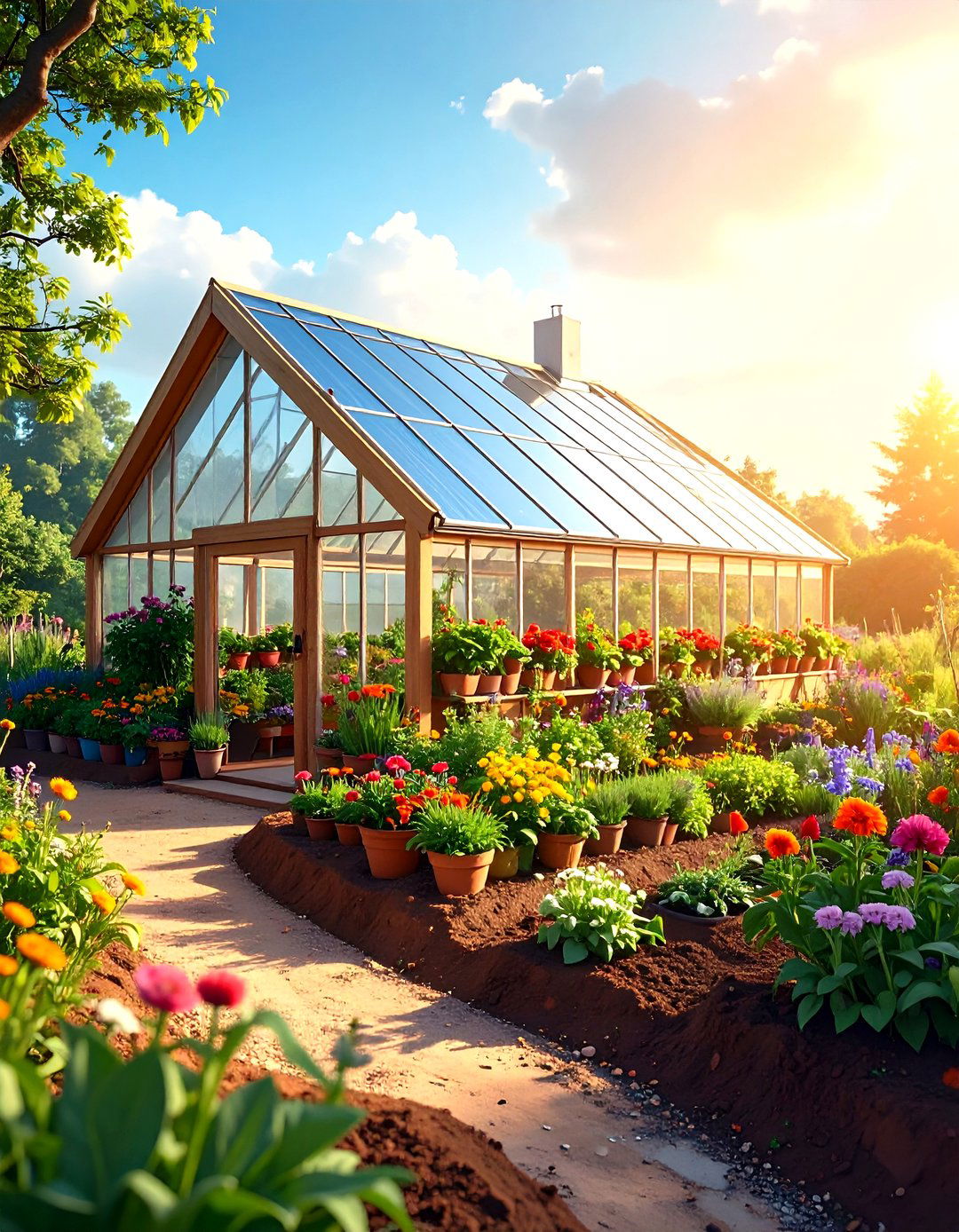
Digging your greenhouse 1.5–2 m below grade taps the earth’s steady 10–15 °C temperature. Slope the glazing roof north-to-south so winter sun penetrates deep while frigid winds skim overhead. Because only the transparent roof meets the elements, construction needs far less framing and insulation. In Bolivia, walipinis keep peppers producing at 3,800 m elevation; in Montana, root crops and hardy greens persist through –30 °C nights with minimal backup heat. Include french drains and a vent shaft to prevent waterlogging and stale air.
7. Cold-Frame Greenhouse for Shoulder Seasons
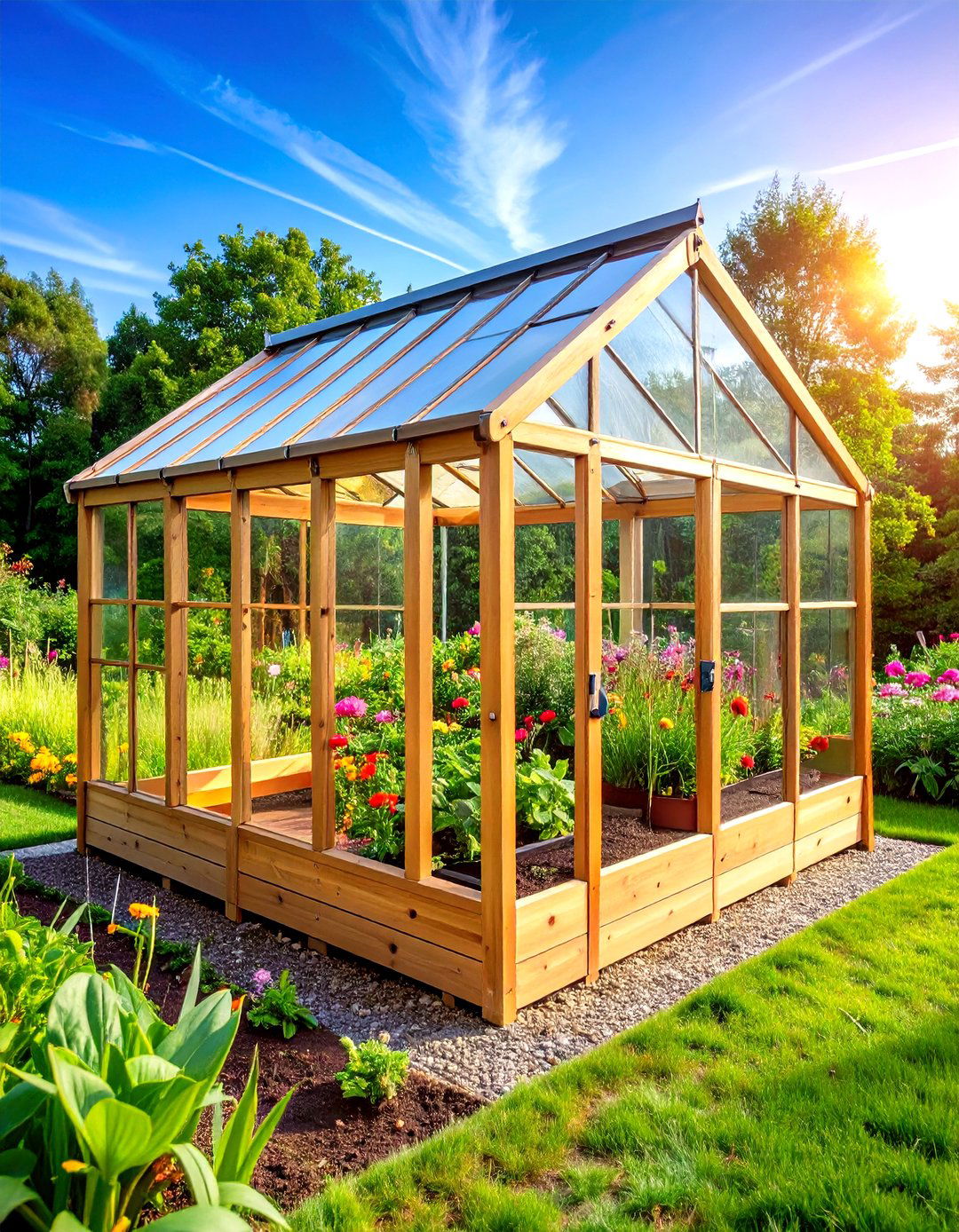
Picture a low, lid-topped box that sits right on garden soil: that’s a cold frame—your simplest greenhouse gateway. A hinged, clear cover traps solar warmth, adding a crucial 5-10 °C buffer that pushes planting schedules two to four weeks earlier and keeps harvests rolling well into frost. Use old storm windows or polycarbonate offcuts for the lid, and prop it open on sunny days to avoid overheating. Because frames hug the ground, they shrug off wind and require no foundation, perfect for renters or budget builders. Gardener's Supply Iowa State University Extension
8. Hydroponic Rooftop Greenhouse for City Blocks
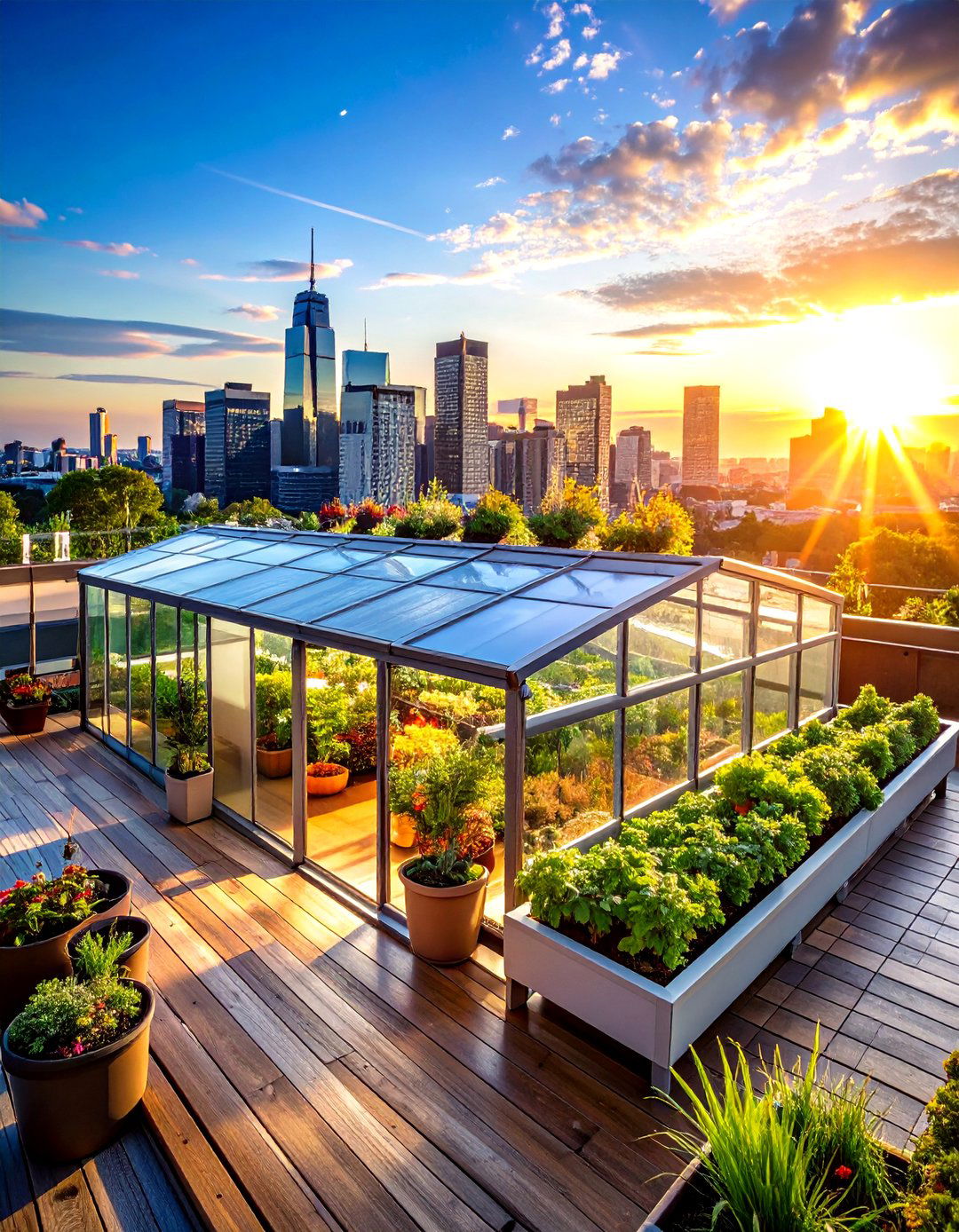
Urban rooftops waste massive solar real estate. Install lightweight aluminum racking, hydroponic channels, and double-wall polycarbonate cladding to convert it into a sky farm. With drip-fed nutrient film, lettuce heads reach market weight in half the outdoor time while rainwater capture supplements irrigation. Montreal’s Lufa Farms nets millions of pounds of produce annually atop logistics warehouses, showing how rooftops can localize supply without extra land. Factor structural load limits and wind uplift into engineering, and align vents to prevailing breezes for passive cooling. Freight Farms Food & Wine
9. Gothic-Arch Greenhouse Built for Heavy Snow

If your winters dump white blankets, a pointed Gothic arch sheds drifts far better than Quonset hoops. The steep ridge limits flat surfaces where snow can accumulate, reducing collapse risk and cutting mid-storm shoveling. Paired with high sidewalls, the design offers generous headroom for trellised cucumbers while directing condensate to gutters instead of dripping on foliage. Opt for 4-year, 6-mil greenhouse film and cross-brace end walls for storms stronger than 120 km/h. Integrated Pest Management
10. Vertical-Farming Greenhouse Towers

Stacking crops in modular columns multiplies production per square metre—up to 10× that of bench layouts—while shortening worker reach. Hydroponic or aeroponic towers mist roots with nutrient solution, and integrated LEDs bolster winter light. Because each column forms a micro-climate, CO₂ enrichment and pest control require less volume of treatment. Eden Green’s tower systems show consistent year-round lettuce yields with minimal water, making them ideal where land is scarce and markets demand reliable supply. Eden Green
11. Portable Pop-Up Greenhouse for Season Flexibility
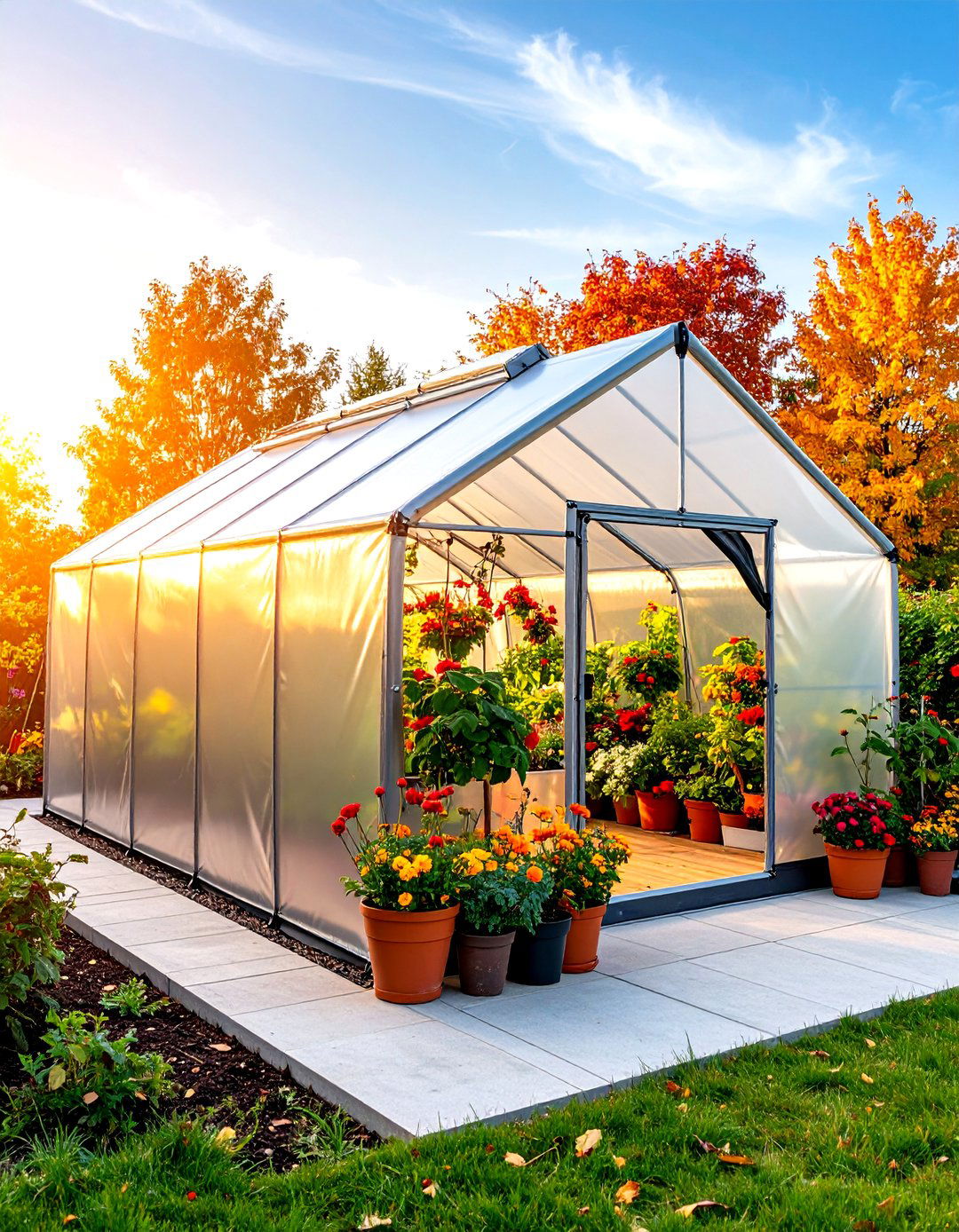
When you need temporary cover—starting trays in spring or shielding peppers from an early fall frost—look to collapsible walk-in tents. Steel or fiberglass rods click together, and a zip-front polyethylene shell maintains 5–7 °C warmer nights. Stake the skirt and add sandbags to anchor gusty corners. After seedlings transplant, fold the frame flat for storage, freeing the garden for tall summer crops. Choose models with roll-up side vents and insect mesh to manage humidity and pests. The Spruce
12. Solar-Powered Ventilated Greenhouse
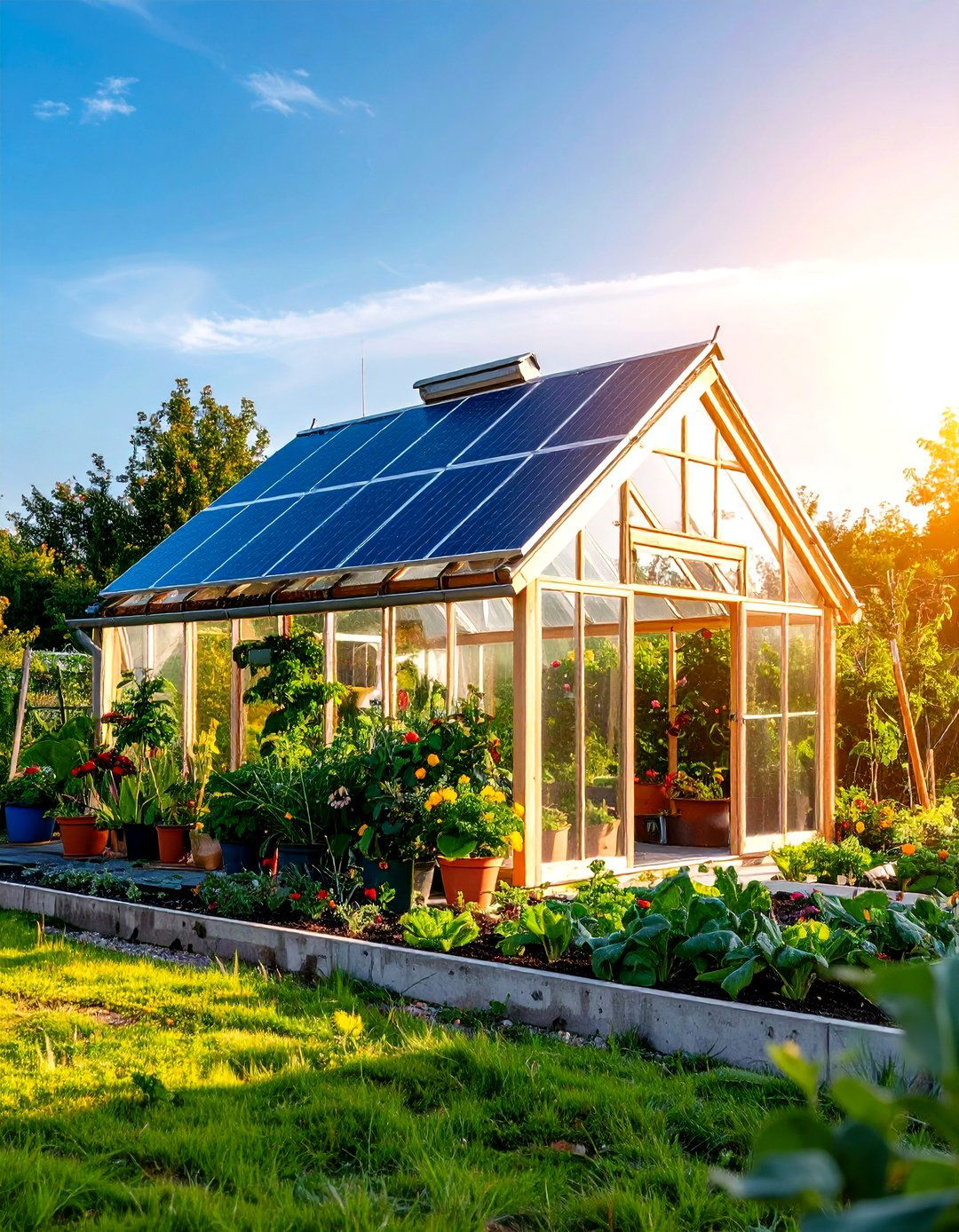
Automatic airflow keeps plants from cooking, yet grid power isn’t always nearby. Mount a 20–50 W photovoltaic panel wired to a thermostatic exhaust fan near the roof peak; when interior air tops 30 °C, the system whirs on, venting hot air without flipping a switch. For night cooling, pair with lower intake flaps. DIY enthusiasts report setups costing under $250, repaid through healthier transplants and energy savings. Sizing panels roughly two watts per cubic metre covers most hobby houses. Greenhouse Emporium
13. Bamboo-Frame Greenhouse for Low-Impact Builds
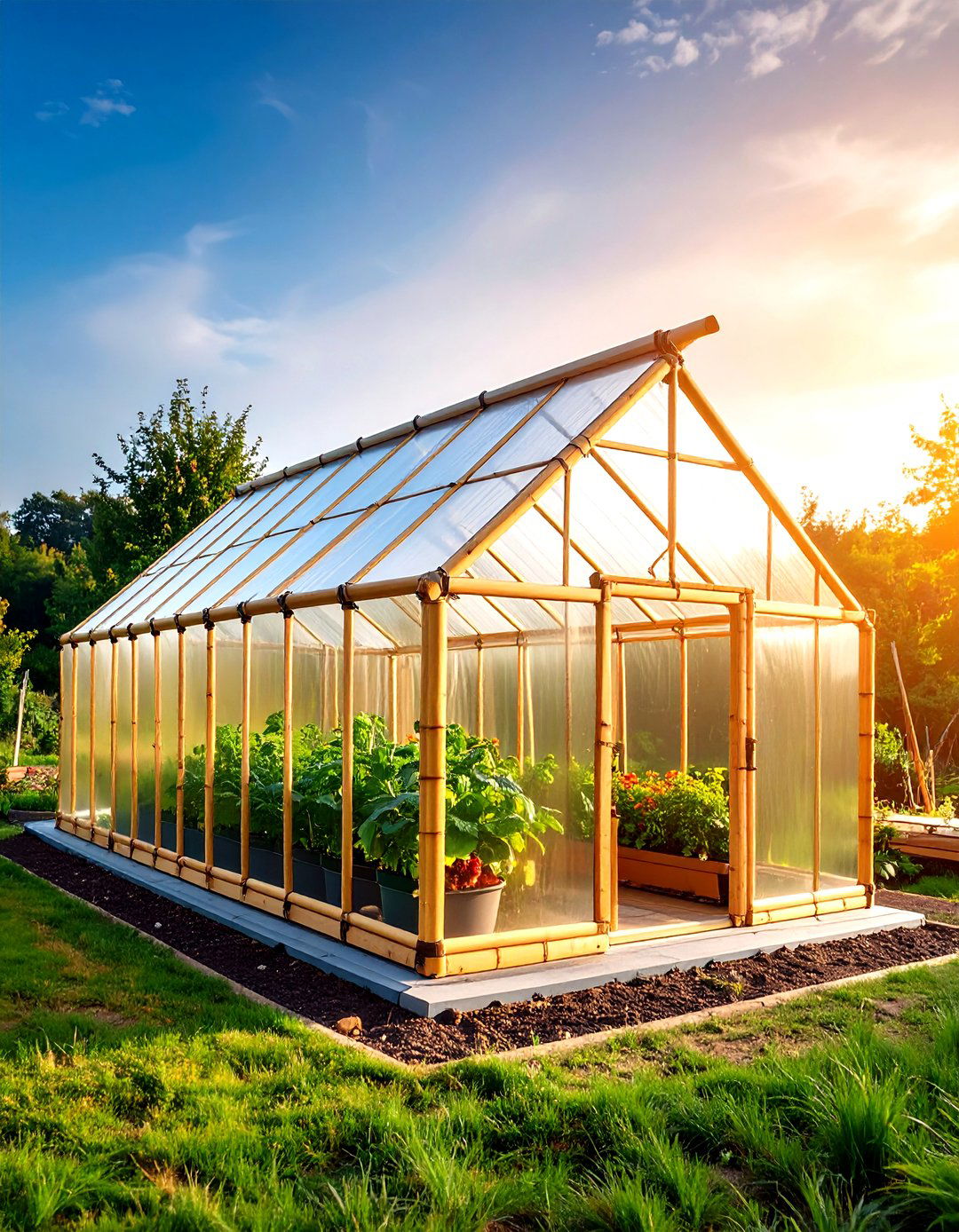
Need a structure that’s strong, renewable, and cheap? Harvest locally grown bamboo, lash or bolt poles into A-frames, and sheath with greenhouse film. Bamboo’s tensile strength rivals steel, yet its embodied carbon is a fraction of aluminum. A small crew can raise a 20 m² tunnel in a weekend, and when the cover finally ages out, poles can compost or fuel a biochar kiln. For longevity, char or paint the buried ends and cross-brace corners against storm loads. The Survival Gardener Premeditated Leftovers™
14. Rainwater-Harvesting Greenhouse Roof
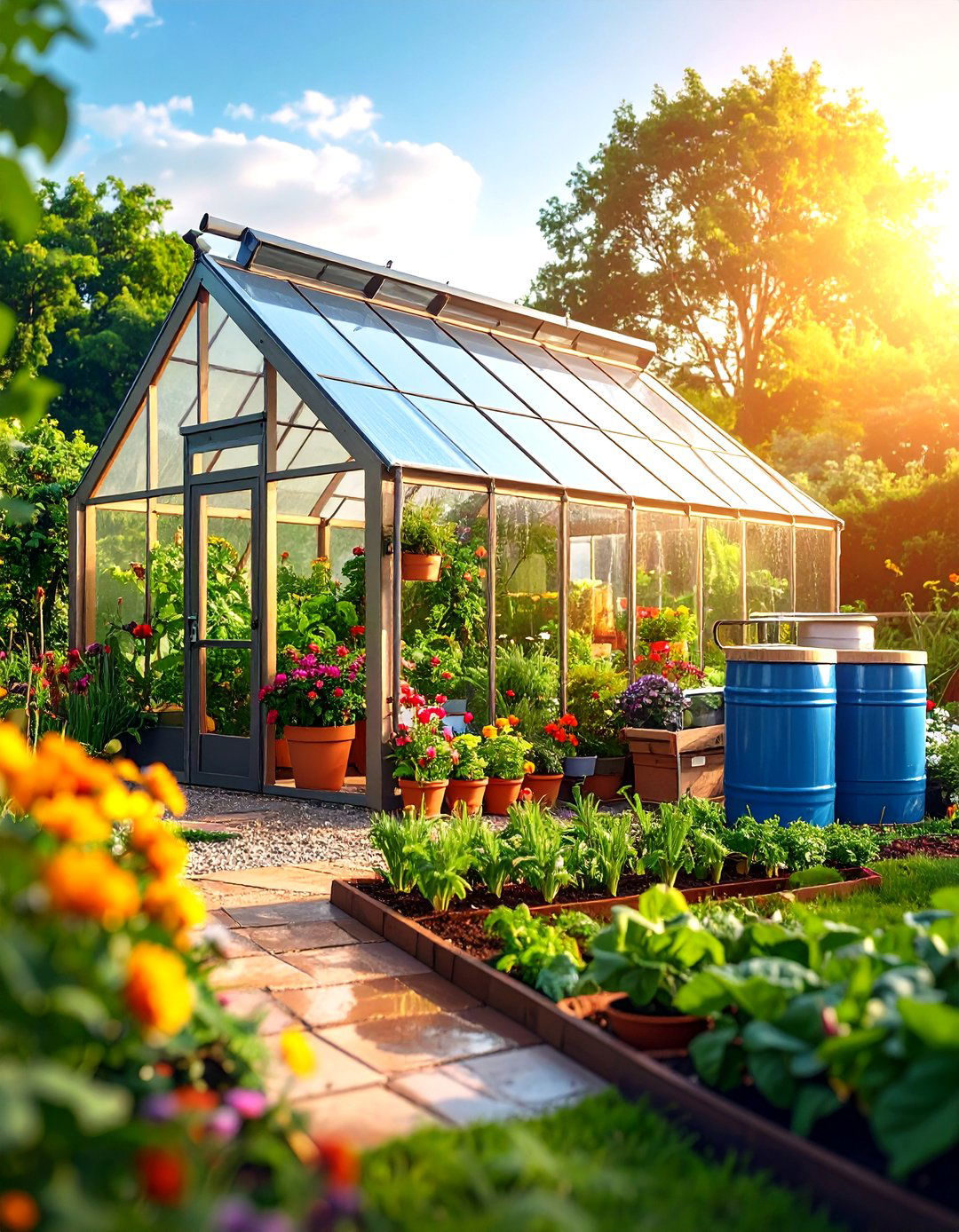
Every square metre of roof can yield 0.8 litres per millimetre of rainfall—free irrigation waiting to be captured. Gutter glazing edges into downspouts, feeding food-grade barrels or an underground cistern with first-flush diverters to keep debris out. Gravity-fed drip lines then hydrate beds with zero pumping cost. Rainwater’s neutral pH and low dissolved salts reduce nutrient lockout in sensitive crops like blueberries. Even small systems can supply 50 % of annual water for a 12 m² house in temperate zones. Rainwater Management Solutions LSU AgCenter
15. Smart Greenhouse with IoT Sensors
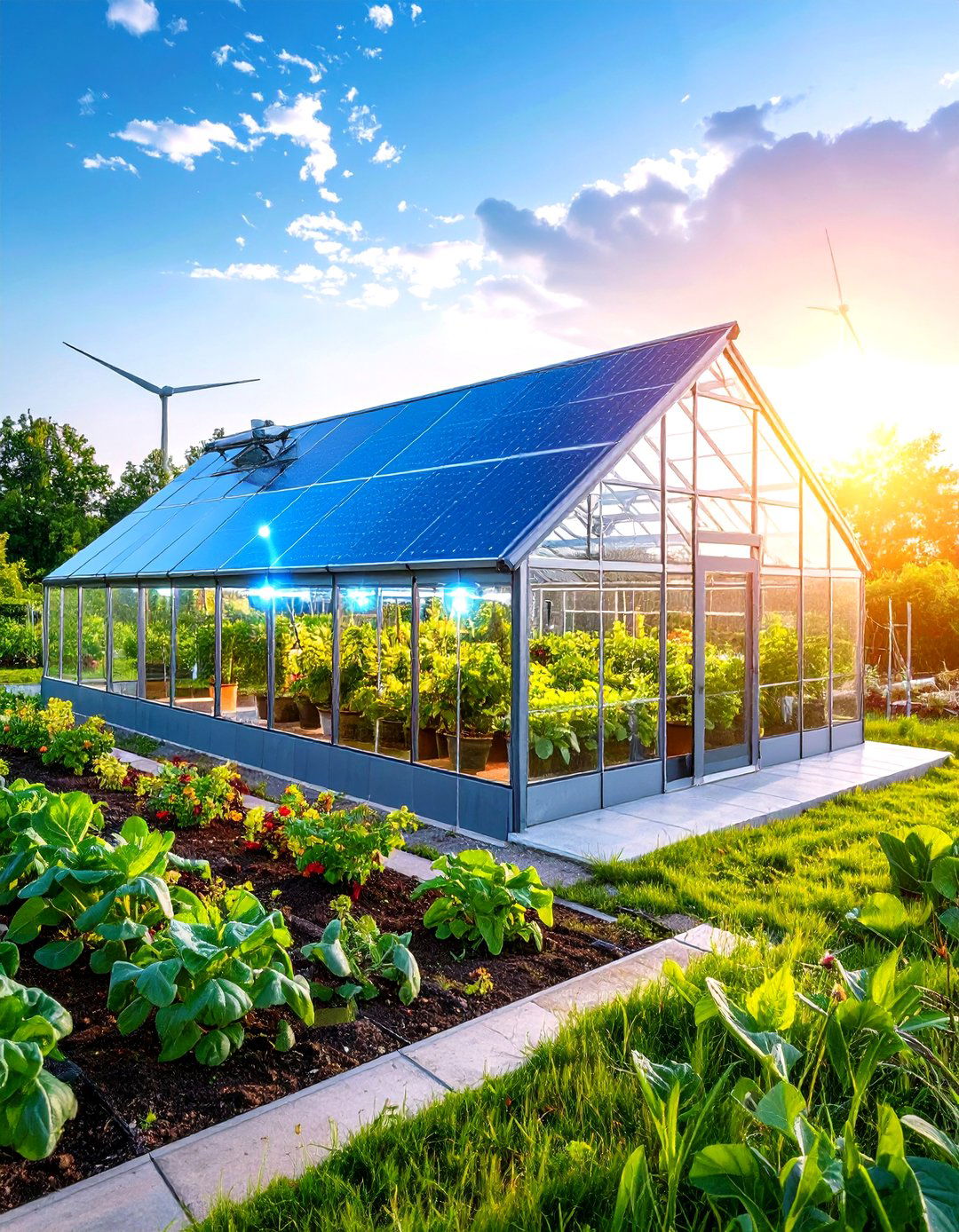
Wireless nodes that log temperature, humidity, light, and soil moisture every minute let you fine-tune environments remotely. Connect a microcontroller to control vents, heaters, and irrigation based on setpoints, cutting labour and water by up to 30 %. Alerts sent to your phone warn of heater failures before seedlings wilt. Commercial kits now bundle LoRa or Wi-Fi connectivity, rechargeable batteries, and dashboards that visualize trends over months for better crop planning. TEKTELIC
16. Compost-Heated Greenhouse Beds
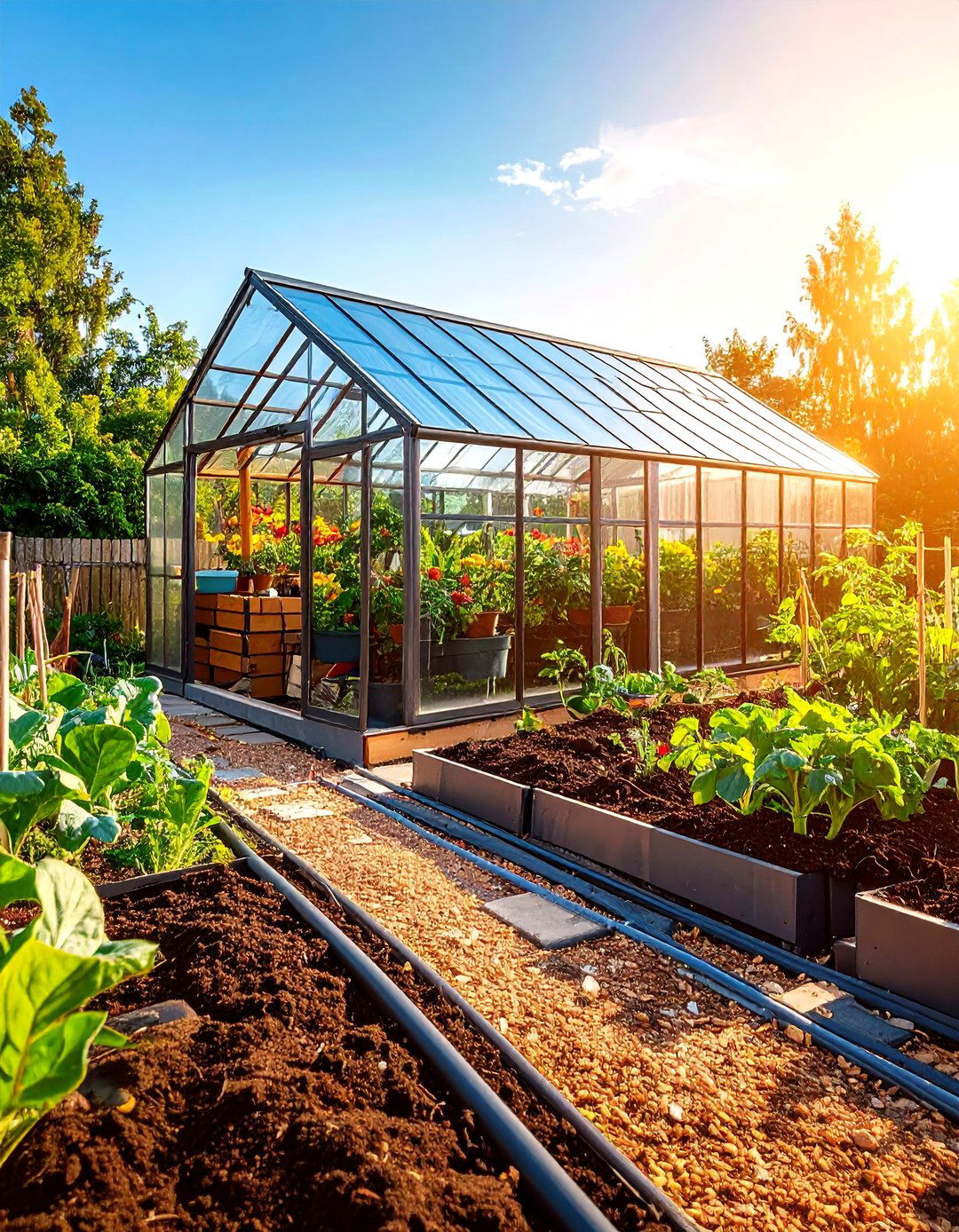
Why pay for propane when compost piles can reach 60-70 °C? Run perforated PEX tubing through active piles outside, then circulate the warmed water under benches or in radiant floor loops. Each cubic metre of decomposing biomass can deliver roughly 200 MJ of heat over six weeks—enough to protect square-metres of baby greens. Agrilab-style heat exchangers avoid burying pipes inside the pile, simplifying turning. Add fresh wood chips and poultry manure to maintain microbe metabolism through winter. Permies YouTube
17. Pollinator-Friendly Greenhouse with Bumblebee Hives
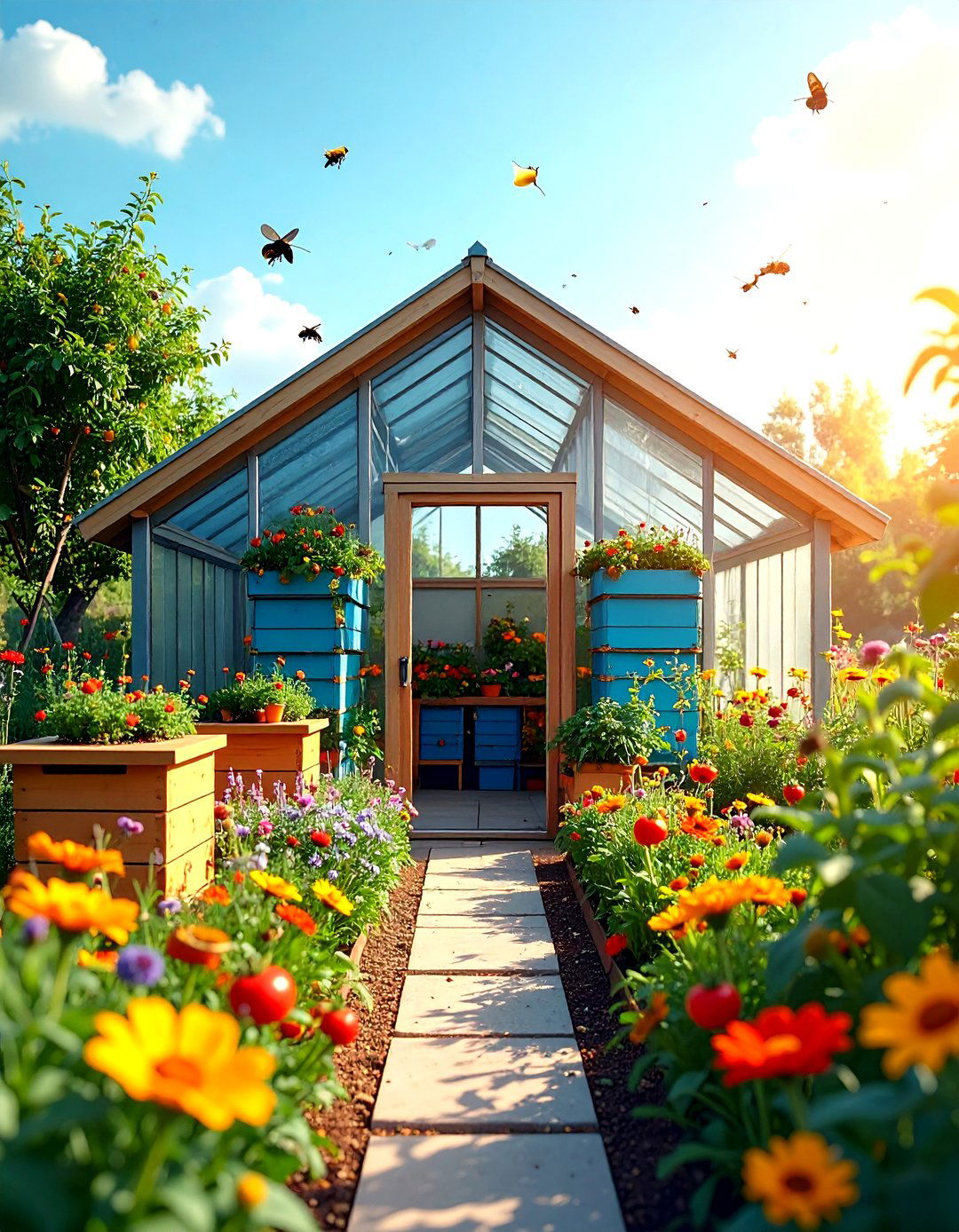
Inside large tomato or pepper houses, managed bumblebee colonies raise fruit set by up to 25 % and even out fruit size. Place hive boxes off the floor, keep average temperature near 24 °C, and supply flowering herbs to sustain bees during crop changeovers. Because bumbles buzz-pollinate, they excel where hand-shaking blossoms is impractical, slashing labour and improving uniformity. Select commercial hives with syrup feeders and follow supplier guidelines for rotation every 8–10 weeks to keep colonies vigorous. Royal Brinkman SARE
18. Modular Balcony Greenhouse Kit
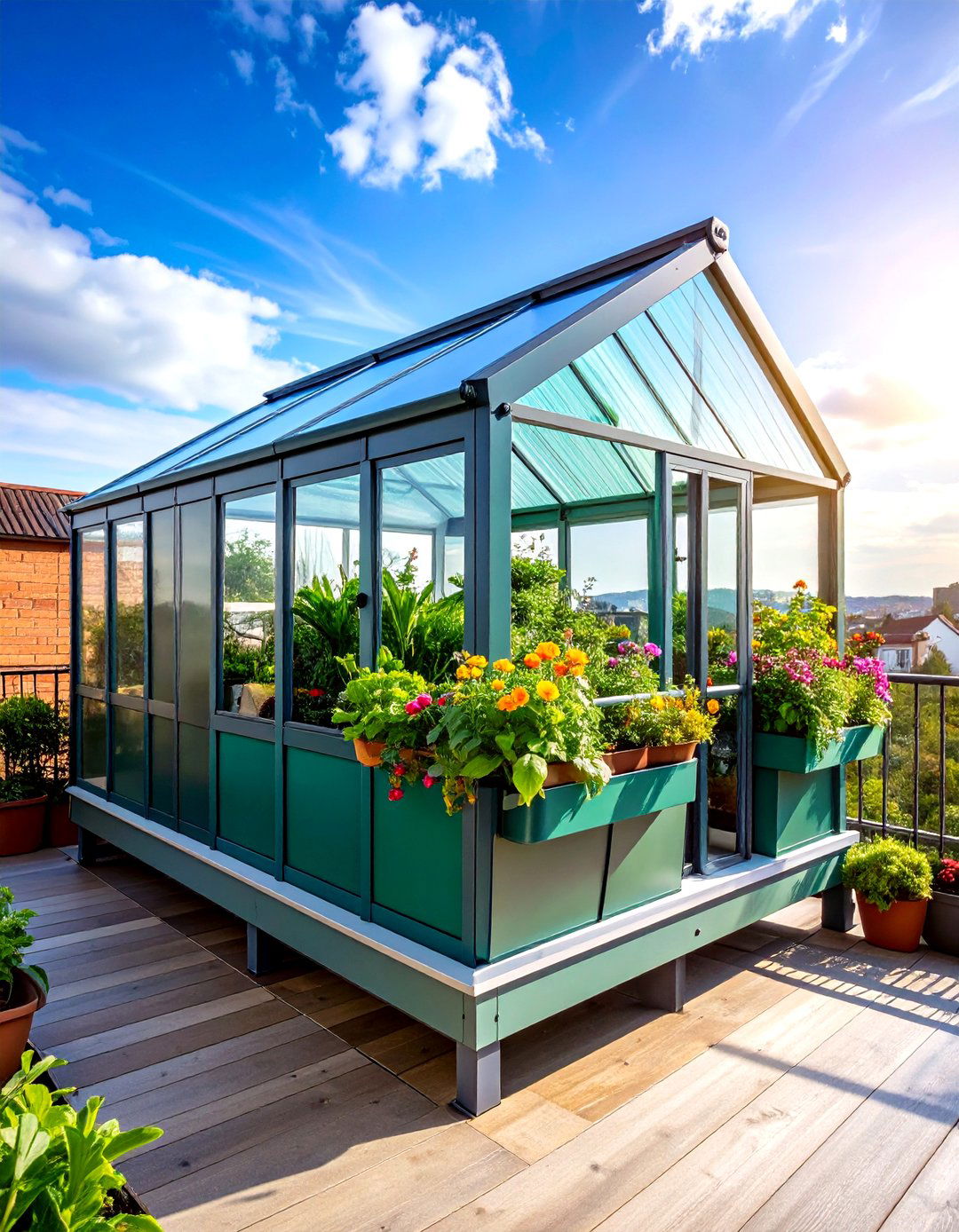
Urban dwellers can still sow seeds—look for snap-together kits under 2 m² that bolt to balcony railings. Double-wall polycarbonate panels insulate while keeping weight below load limits, and adjustable roof vents prevent fungal buildup. Some units arrive flat-packed and assemble with zero tools in under an hour, perfect for renters. Use stackable planters to boost root volume, and add a small LED bar for shady exposures. Even this micro footprint yields herbs, cherry tomatoes, and baby greens steps from the kitchen. Greenhouse Megastore
19. Kit-Based Greenhouse for Quick Expansion
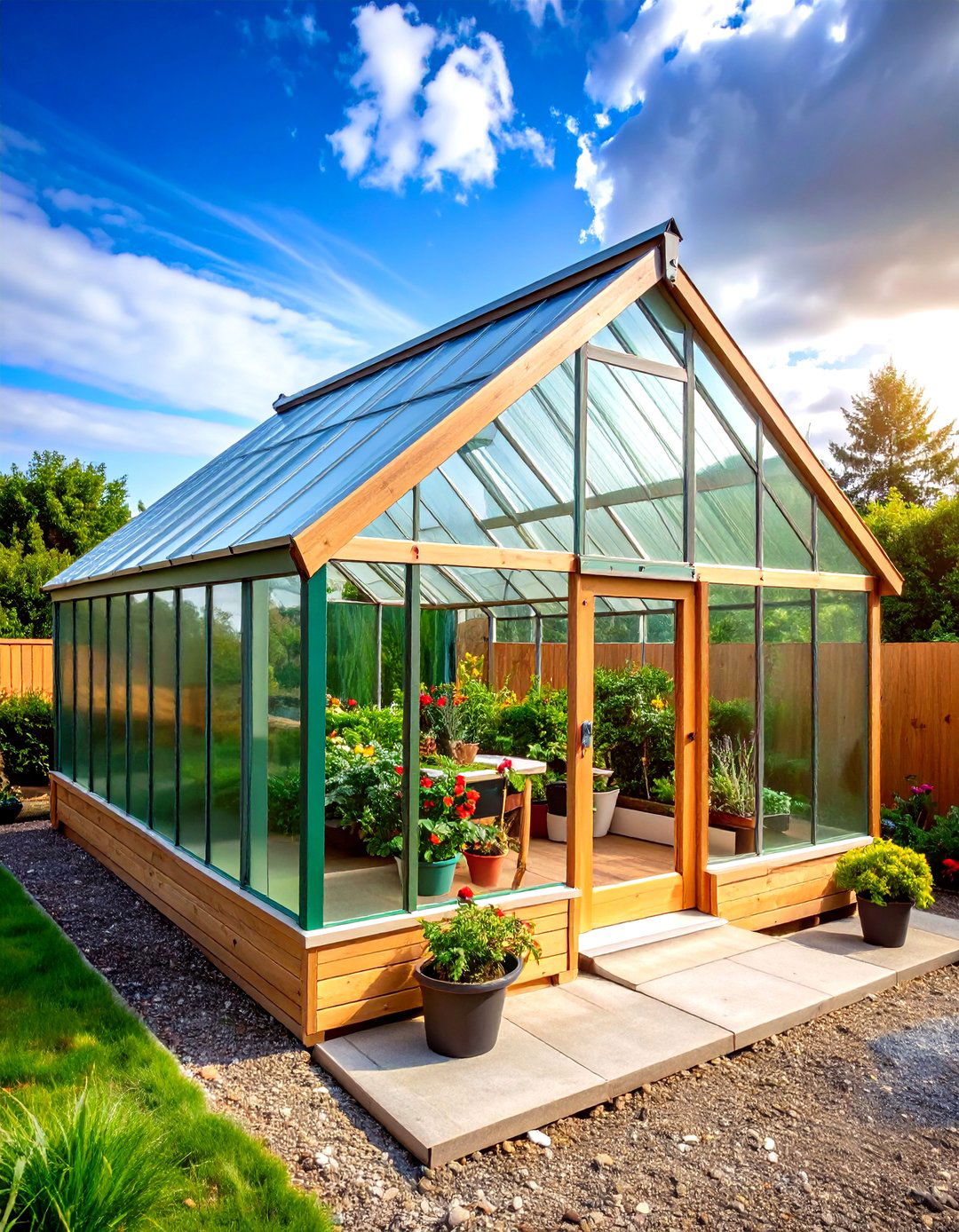
If carpentry time is scarce, pre-engineered kits offer predictable costs and code-compliant snow and wind ratings. Choose cedar for unmatched longevity, aluminum for low maintenance, or steel hoops for budget builds. Many vendors pre-cut glazing and include automatic roof vents and shelving, slashing setup time to a weekend. Compare R-values of single vs. twin-wall panels and invest in foundation anchors that match your climate’s frost depth. With warranties often spanning ten years, kits serve as a reliable entry into controlled-environment growing. Canopia
20. Community Greenhouse Hub

Pooling resources with neighbours can transform an empty lot into a year-round food and education center. Shared greenhouses tackle food insecurity by supplying produce to food banks, host school programs on biology, and foster social bonds through volunteer days. Grant funding and corporate donations often cover capital costs, while member fees sustain utilities. Design wide aisles for wheelchair access and schedule crop rotations democratically to match cultural tastes. Successful models report thousands of kilograms donated annually and measurable boosts in community cohesion. Our Midland
Conclusion:
From sun-capturing passive designs to data-driven smart houses, each greenhouse concept above offers a concrete way to stretch seasons, slash inputs, and deepen our relationship with fresh food. Match the idea to your climate, space, and budget, then customize details for even greater resilience. Whether you raise one cold frame or rally a neighbourhood around a shared dome, the greenhouse remains a powerful tool for sustainable abundance and year-round inspiration.


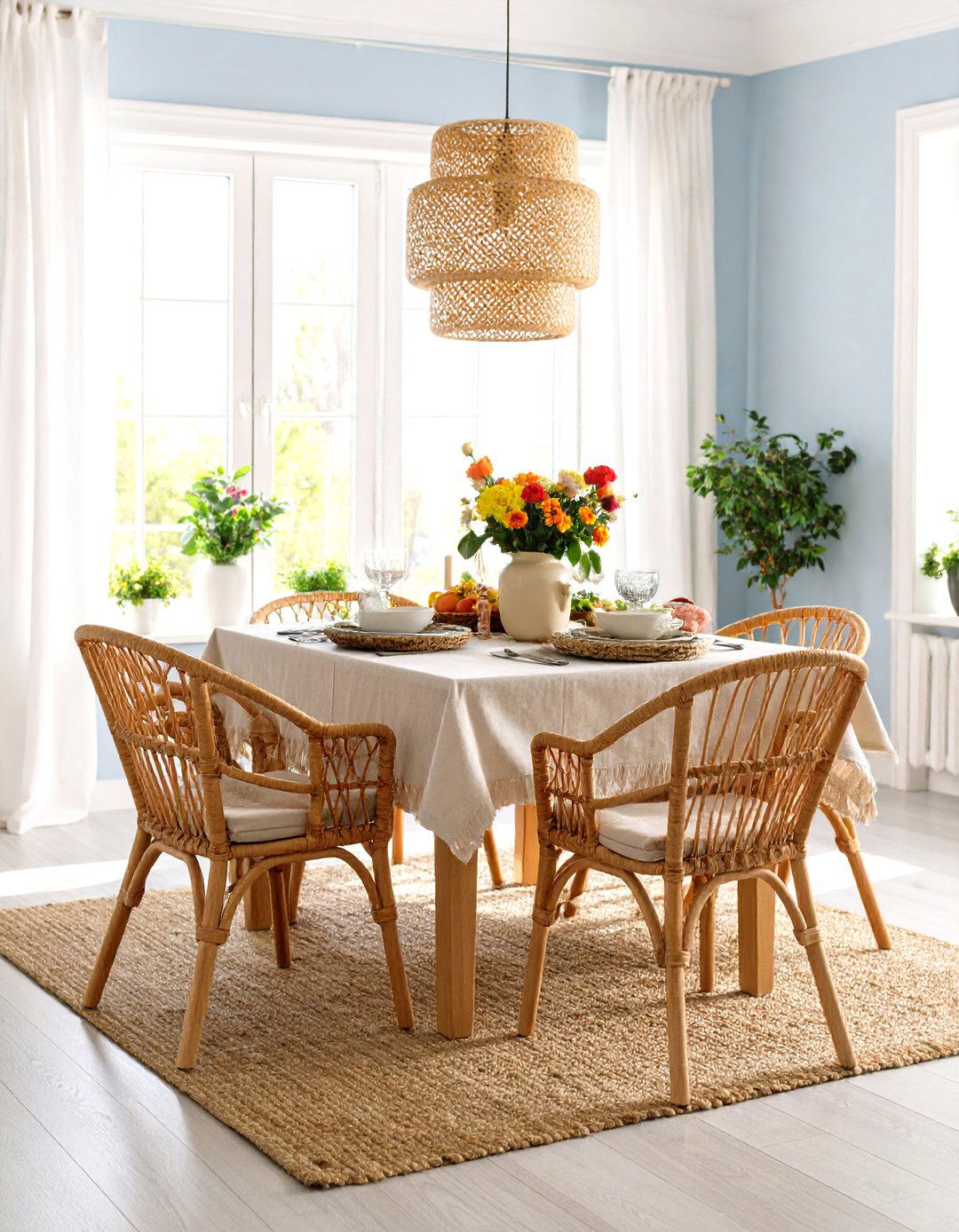
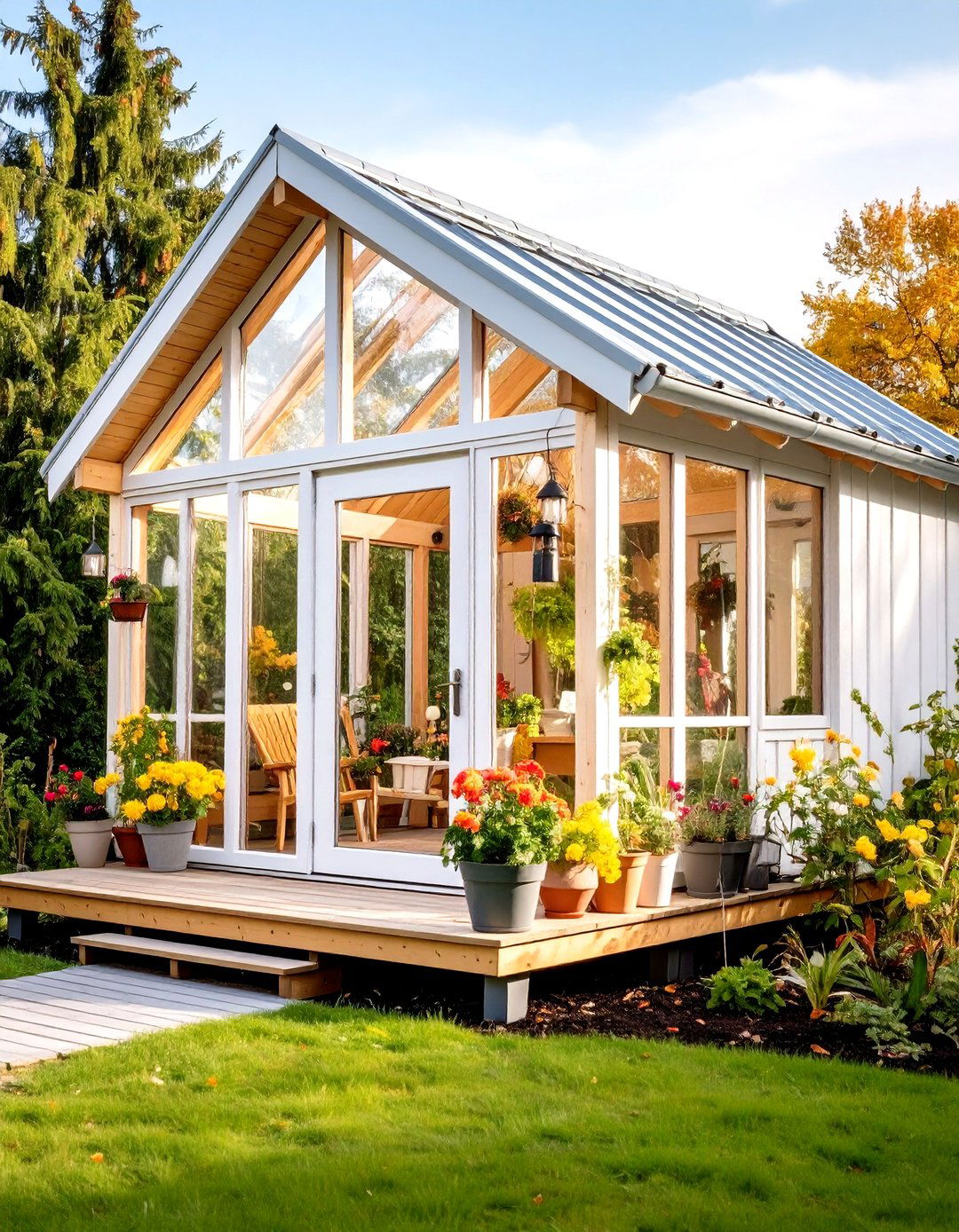
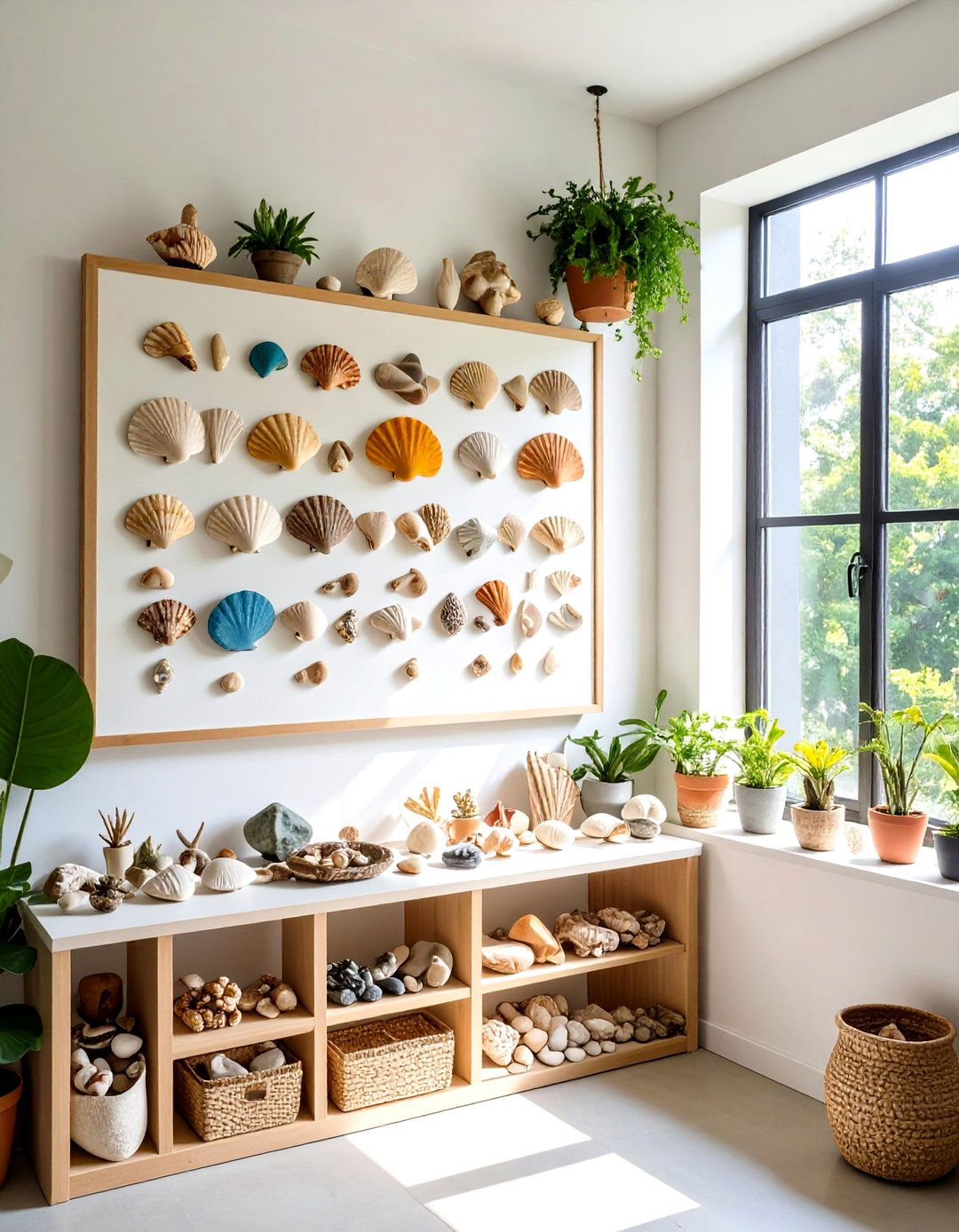
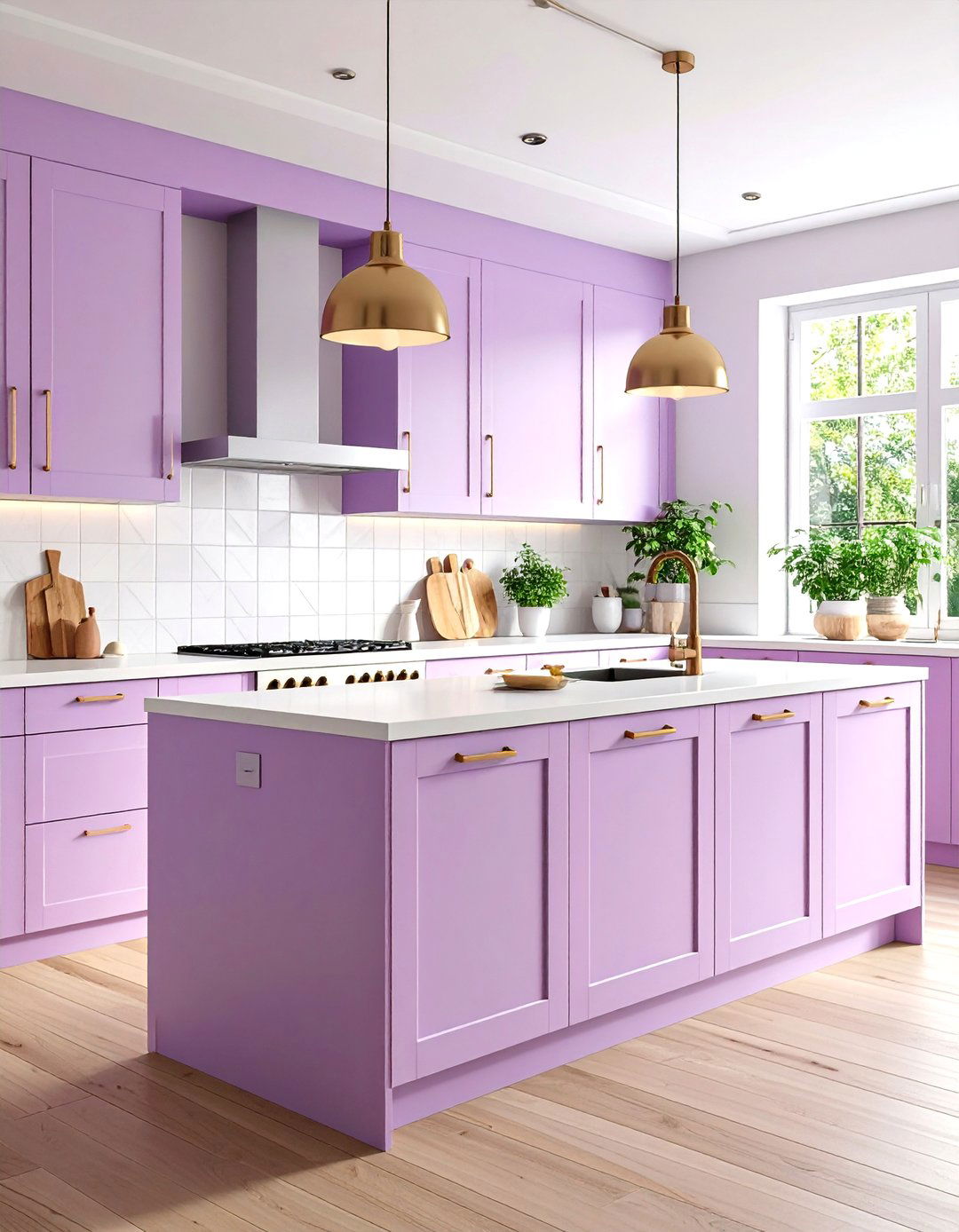


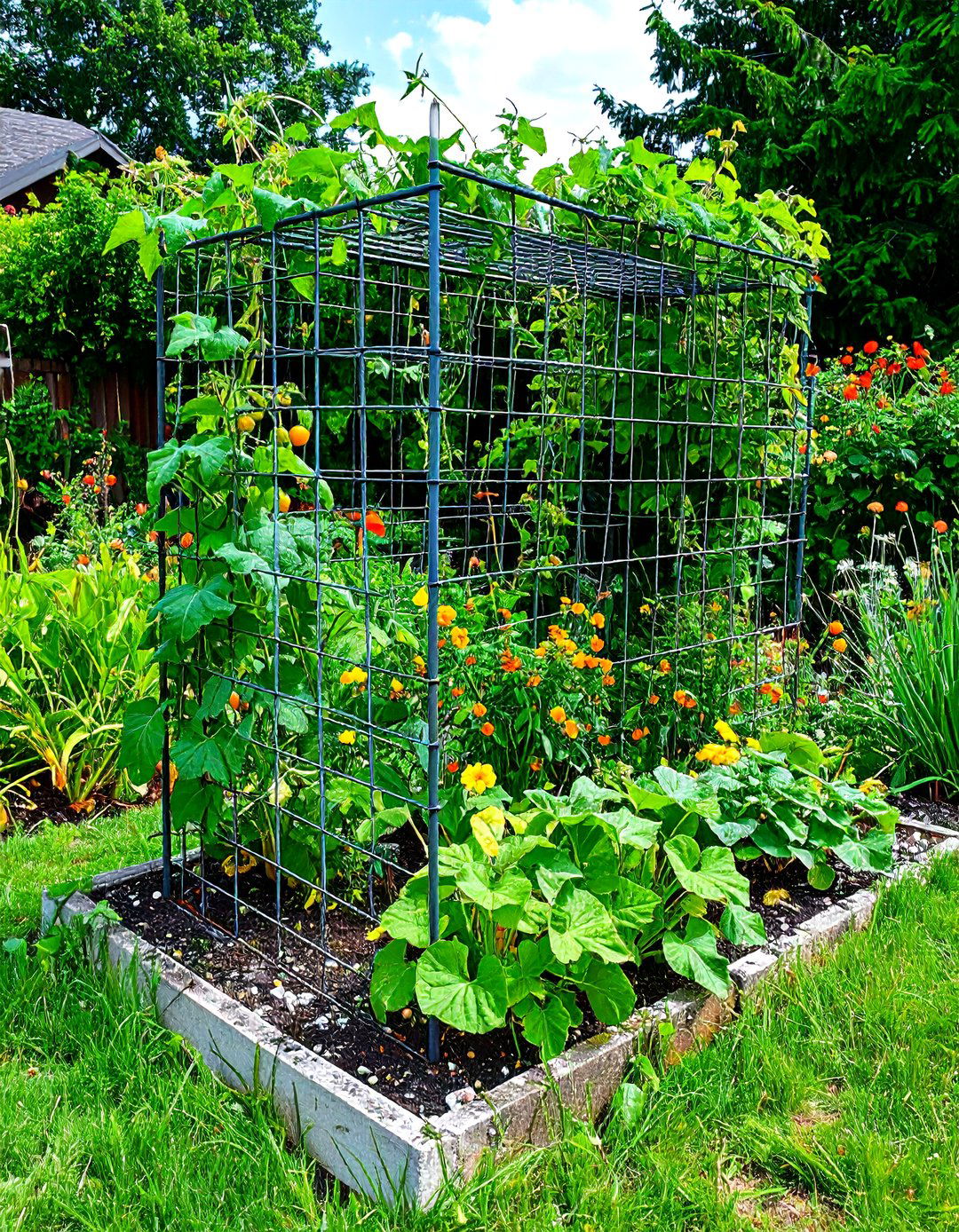
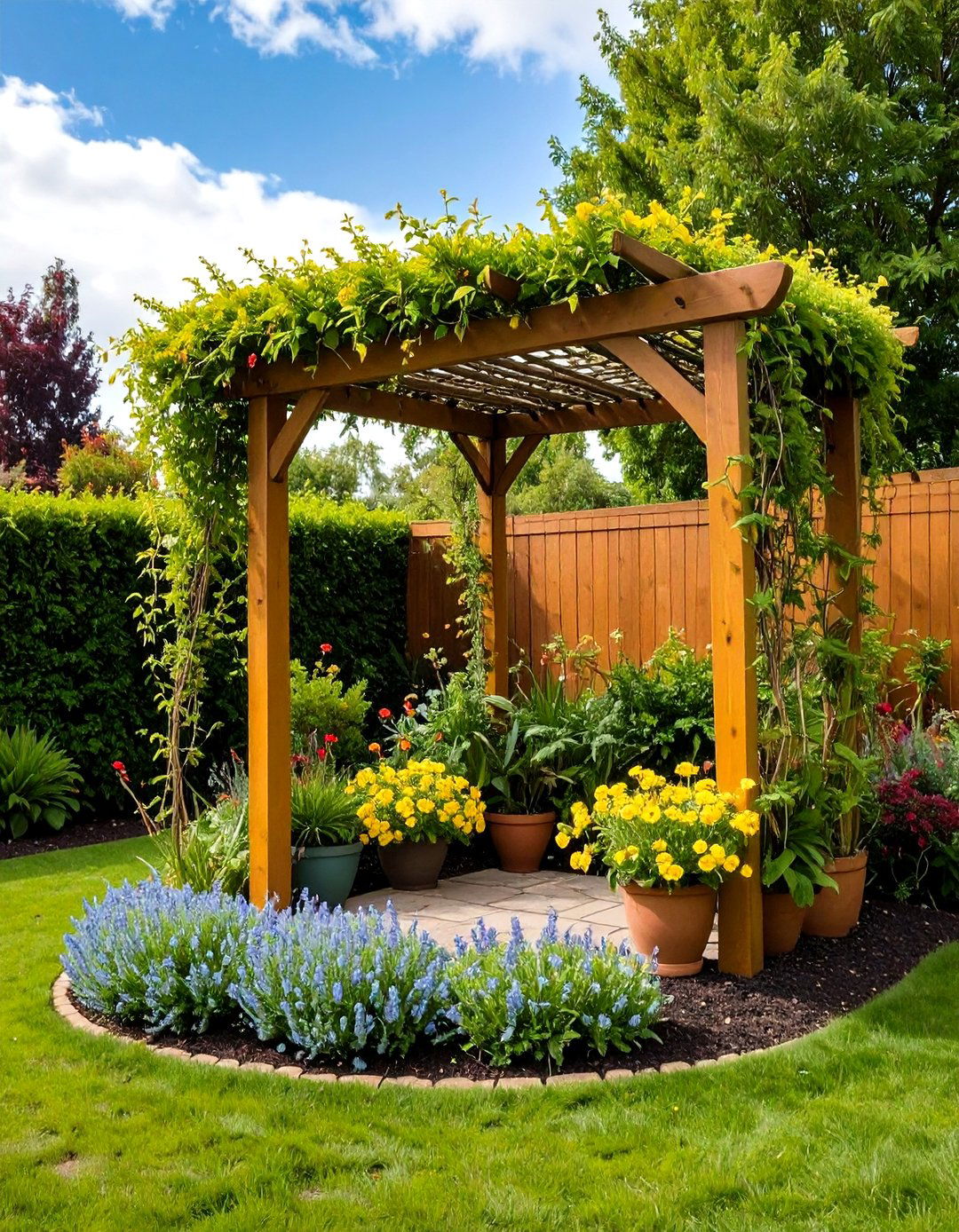
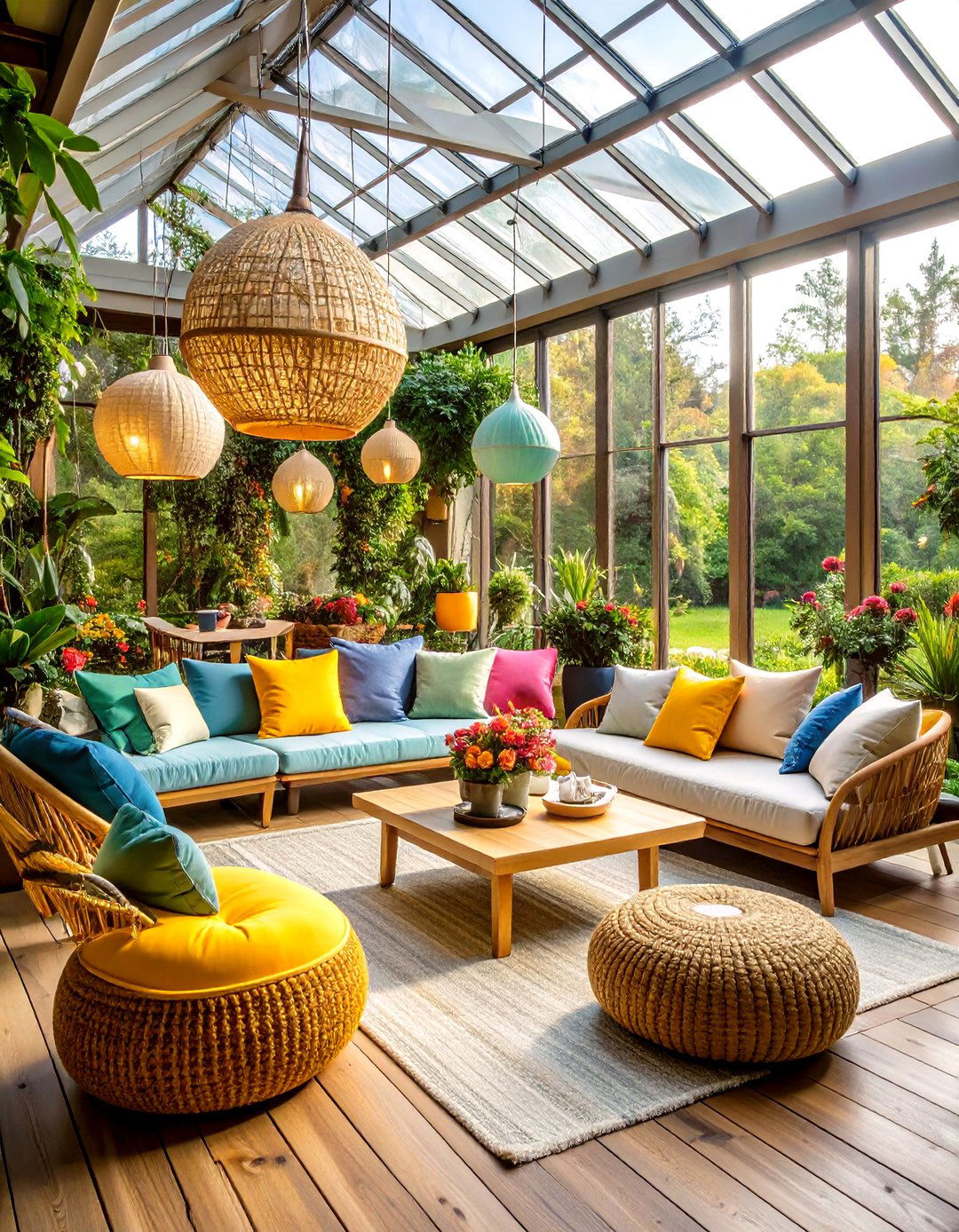
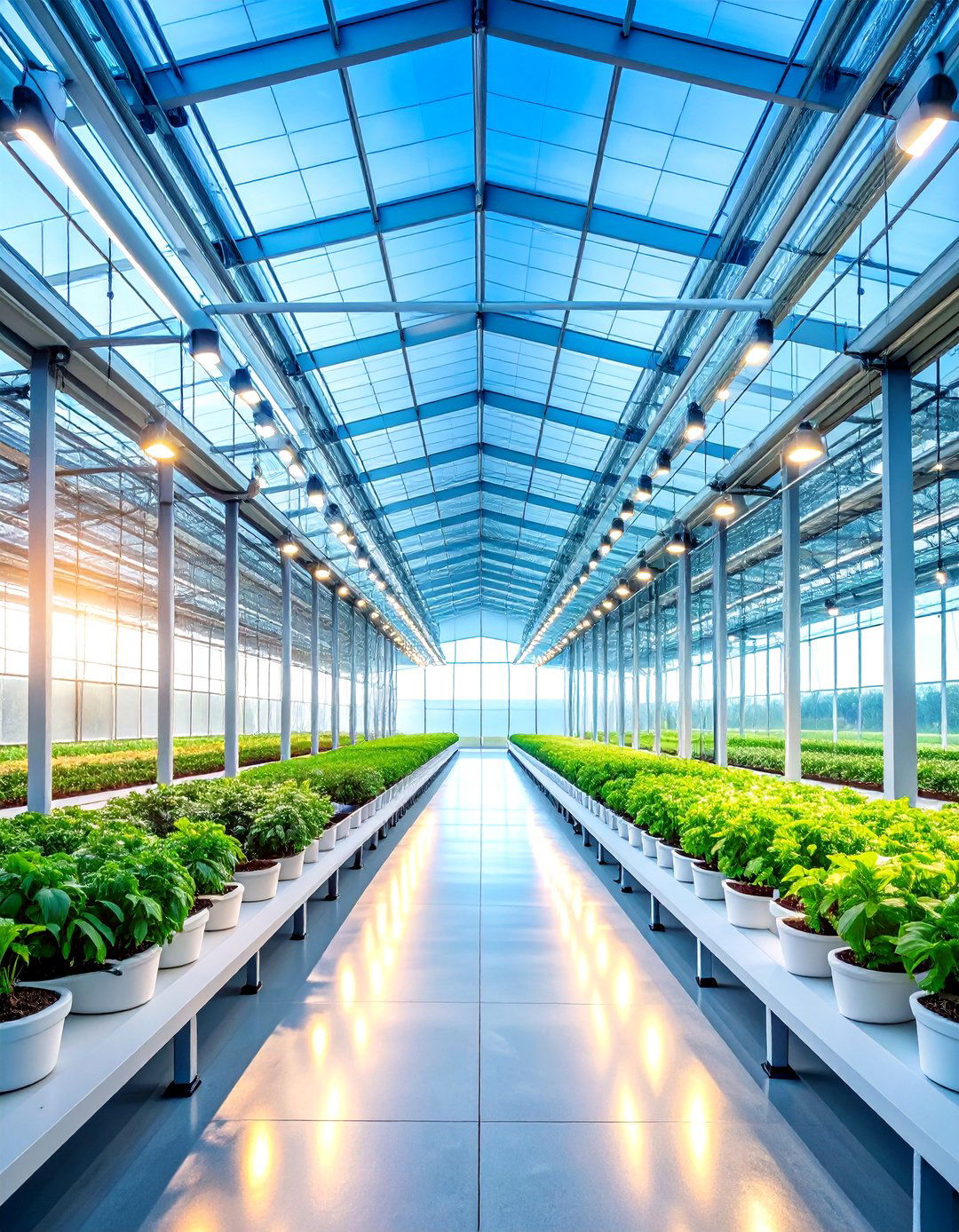

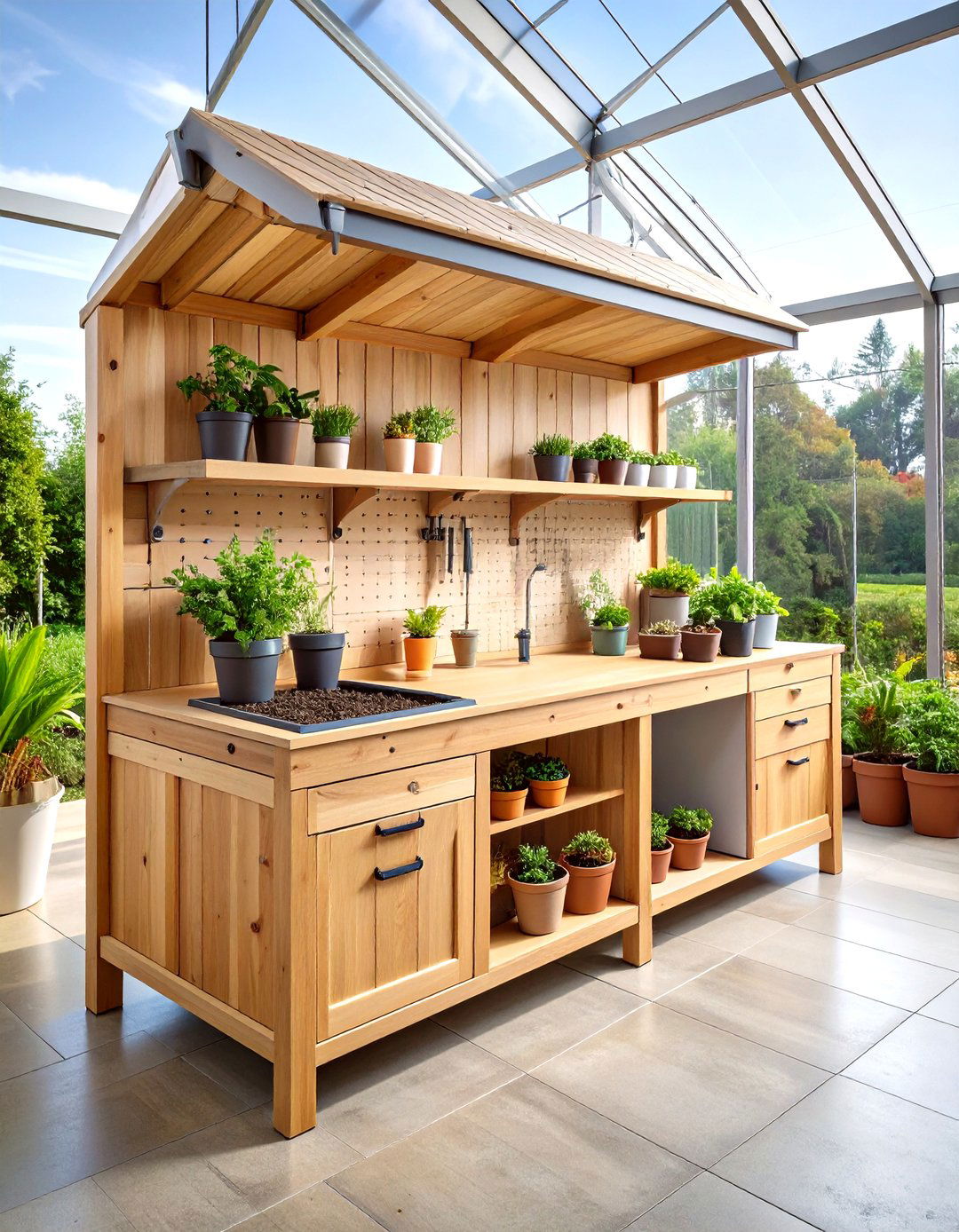
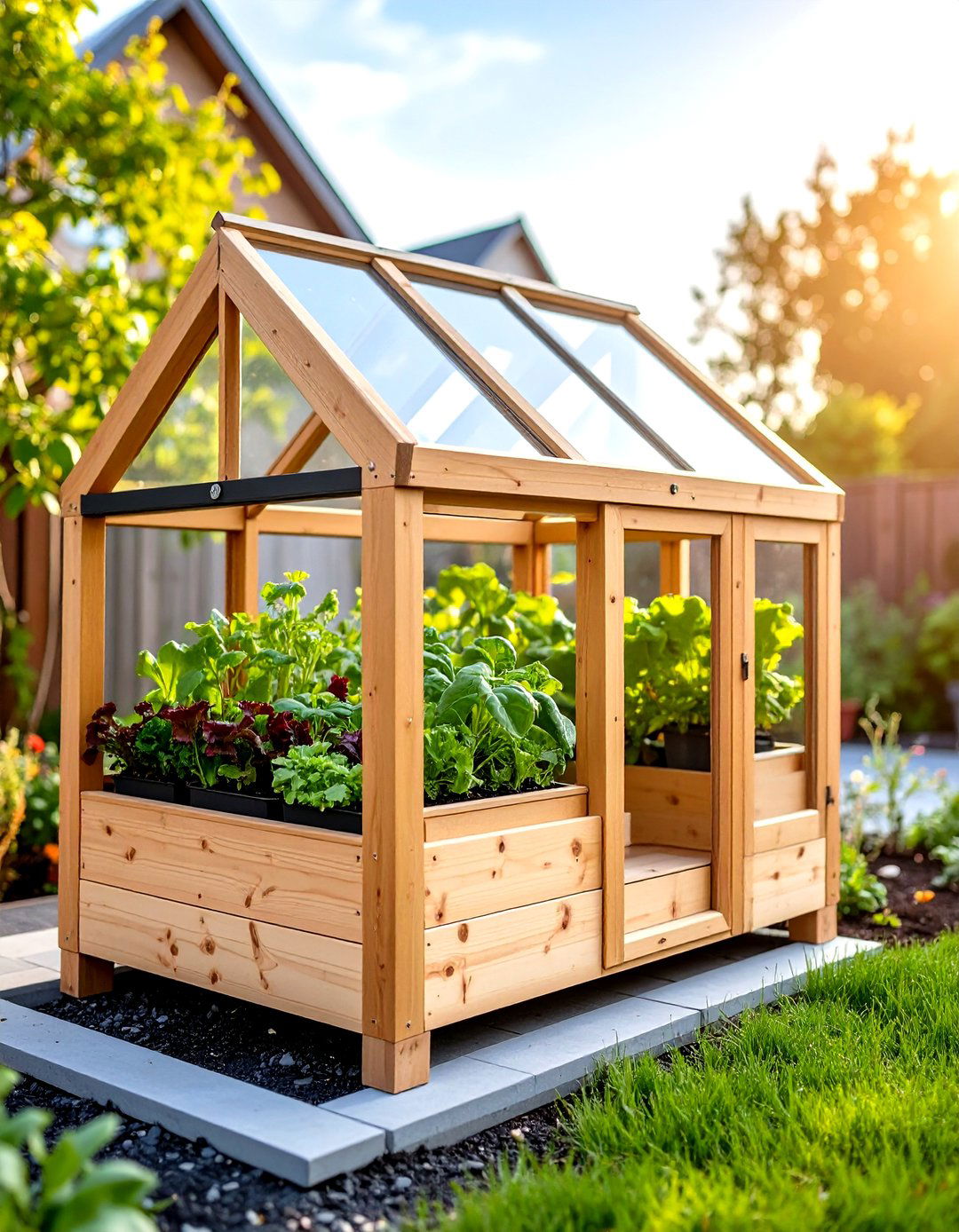
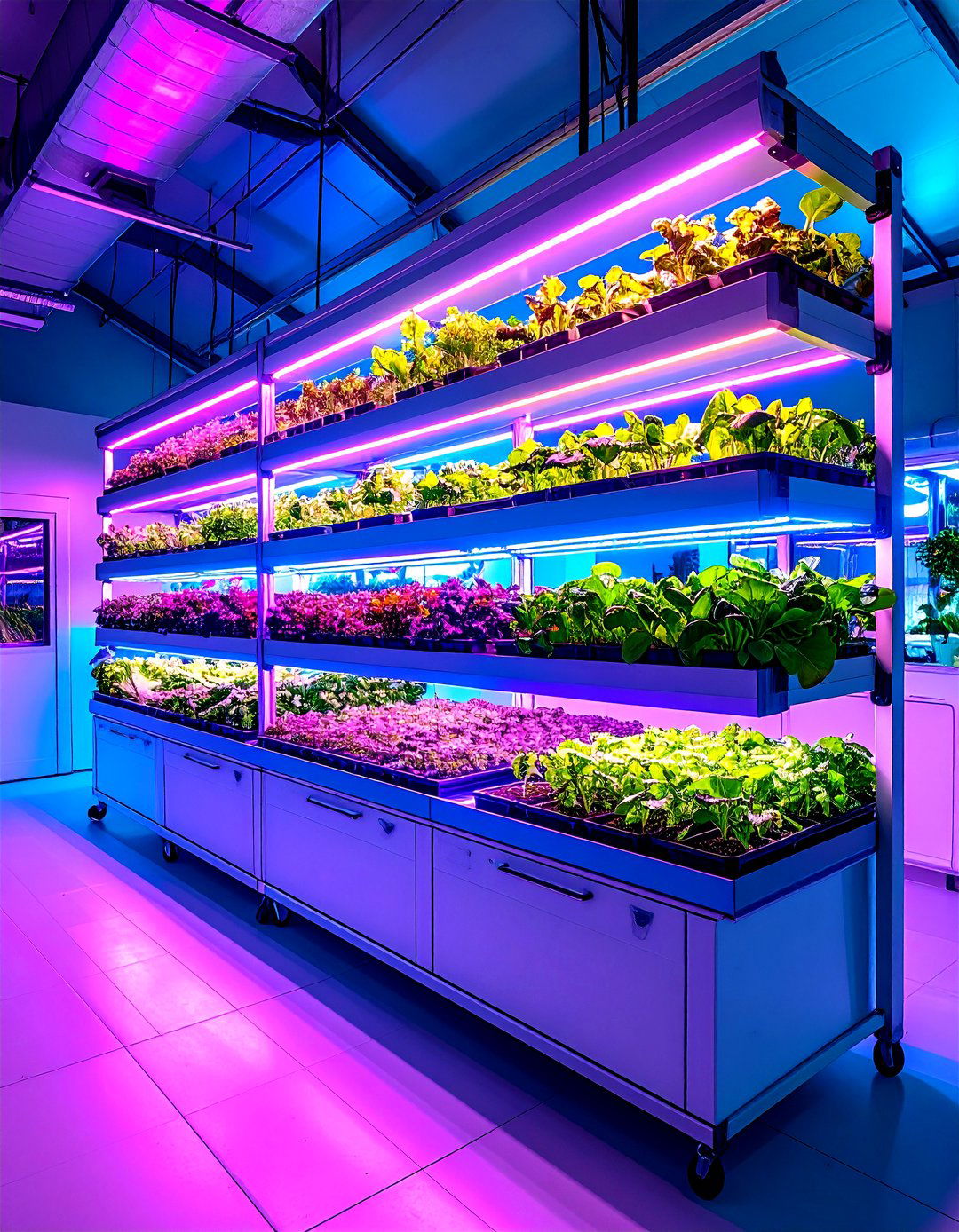

Leave a Reply